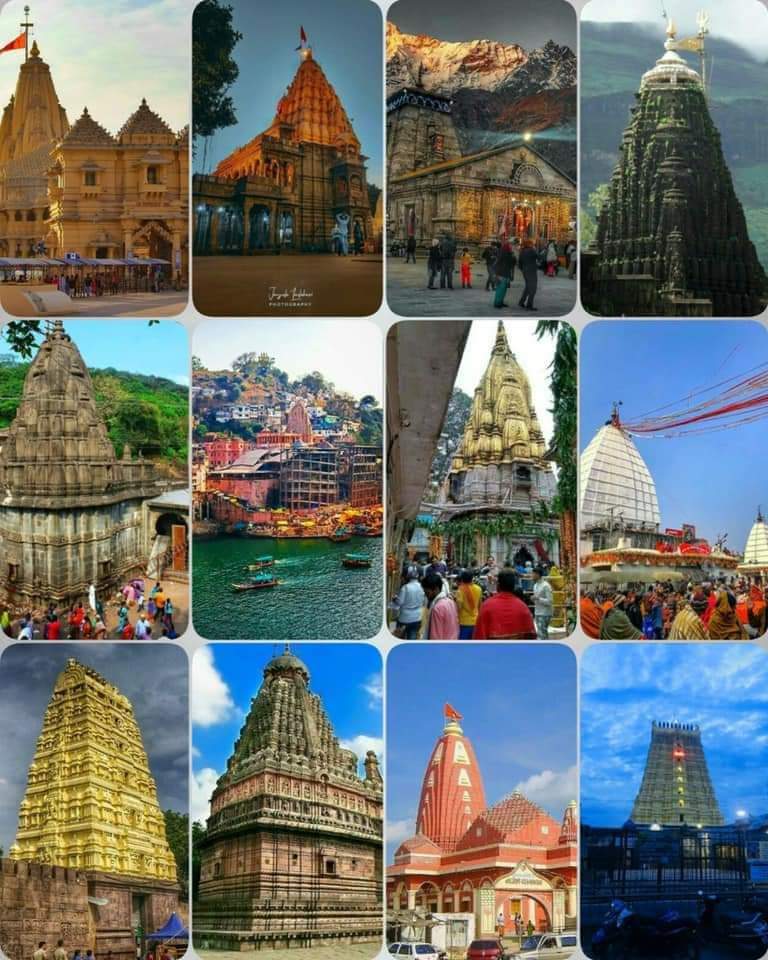
Twelve Jyotirlings
The word Shivaratri is made up of two words-Shiv and Ratri. Shiv is Bhagwan and Ratri means night. There is one Shivratri every month and it falls on Chaturdashi of krishnpaksh of every month. This means, there are 12 or 13 Shivaratris in a year, as the Hindu calendar has 12 or 13 months in a year. MahaShivratri comes once every year and it is on the 13th night and 14th day of Chaturdashi of Krishnapaksh of phalgun month. Some call it Har-ratri or Hae rath.
In Kashmir area, Mahashivratri is celebrated a day before from other parts of India. There it is commonly called as Heerath or Hara Ratri.
Mahashivratri day is a National holiday in Nepal. Nepali people visit Shiv mandirs on this day. Famous mandirs are Pashupatinath and Shi Shakti peeth.
During British Raj, Mahashivratri was a major celebration in Karachi. People worship at Shri Ratneshwar Mahadev mandir. Following ia a postcard showing this- 
Grand celebrations occur throughout the India. Some major mandirs where Mahashivratri is celebrated are-
- Annamalaiyar in Tamilnadu
- Mahakaleshwar Mandir in Madya Pradesh
- Umanand mandir in Assam
- Bhavnath Talethi in Gujarat
-
Mallikarjun in Andhra Pradesh
Some people believe that Shivaratri is the celebration of the birth of Lord Shiva, which is incorrect. No one knows the details of Shiva’s birth. Shiva just manifested himself, and therefore he is also called Swayumbhoo. This may be the day when Shiv manifested from unmanifested form or the day of Lingodbhava.
On Maha Shivaratri, people fast, pray to Lord Shiva, meditate, and chant mantras all day and night. Celebrations go on past midnight. Fasting is not only for food, but also to clean the mind, sit near Bhagvan, do Upasana, and imbibe good thoughts.
There are many legends behind the celebration of MahaShivaratri.
-
One legend about MahaShivaratri is that on this day, Shiva drank the poison, which came out of Samudra Manthan and therefore saving everyone from the effects of the poison.
-
According to another legend, Shiva did Tandav dance on this day. This dance is the source of creation and destruction of the universe.
-
The third legend is that MahaShivaratri is the day of convergence of Shiva and Shakti or Parvati. Many devi’s, devatas, and demons are shown escorting Shiva on this day.
-
One other legend is that this is the day when Shiva appeared through a slit in a lighted pillar in the story of Brahma and Vishnus rivalry. People celebrate the manifestation of Shiv as a Lingam through the slit in the lighted pillar. The lingam had no starting point and end.
-
One more story associated with MahaShivaratri is the story of Lubdhaka or Suswarna who accidentally and unknowingly devotes himself to Shiva, and is blessed by him. He was crossing the forest, late in the evening and was scared. He decides to spend the night on a bael tree. To pass time and prevent himself from falling during sleep, he plucks bael leaves and drops those down, one by one. He was sobbing, as he was terrified and was hungry also, as he did not eat food all day. There was a lingam under the tree and his tears and leaves fell on the lingam. Unknowingly, he offered leaves and water to Shiva, did fasting, and therefore got blessings from Shiva.
-
Some believe that offerings to Linga, on this day, can remove past sins.
-
Some believe that Adi Yogi attained Nirvana, on this day.
People usually offer prayers to Shiva portrayed as a Lingam. The bottom part is called the jaladhari, and the top part is called the lingam. Shiv parivar includes Shiva, Parvati, Ganesh, Kartikey, and Nandi. Nandi is the sacred bull and shiva’s vehicle. Nandi is also called Rishabh.
Maha Shivratri is considered a very auspisious day. Bhishma pitamah left his body on this day. His father, Shantanu, gave him the boon to choose the day of his death (iccha mrityu). He was on the bed of arrows but still waited for Maha Shivratri day to leave his body.
Shakti is present since time immortal. Shakti is energy. Creation, maintenance, and destruction of universe needs energy. Brahma creates universe but knowledge comes from Sarasvati and energy from Shakti. Vishnu maintains universe but wealth comes from Laxmi, and energy from Shakti. Shiv dissolves the universe but energy comes from Shakti. So, the alliance is always there, between Shakti and Trimurti..
Shiva was married to Sati. Why do we celebrate Shivratri as wedding of Shiv and Parvathi. Where is the celebration for wedding of Shiv and Sati?
If Maha Shivratri is celebration of Shiv and Parvati wedding then the correct name should be Maha Parathi Shiv Ratri?
Vivah of Shiv(prakash) and Parvati(prikrity) may mean the joining of our inner prakash with our body and surroundings (prakriti). We become one and understand that inner light and anand can be acheived when when we are with prakriti.
Shiv can be Arup, Rup Arup, or Sarup
Arup:
It is the unmanifested, Chaitanya, Mahadev who is the source of universe creation. It is anaadi and aanant. It is sankoch and Vistaar rahit. It has no prastaran and abhisaran. Means it has no start, no end, it does not contract, expand, spread, and converge. It has no shape, form, character,specificity. It is Nirakar, Nirup, Niramay, Nirgun, and Nirvishesh.
Rup Arup:
This the transitory state between Arup and Sarup.
Sarup:
This is the manifested form of Shiv. It has eight attributes or qualities which are further divided into eight each, so total of sixty four qualities.
- Bhav
- Sarv
- Ishaan
- Pashupati
- Rudra
- Ugra
- Bheem
- Mahat
Shiv is inside everyone. Panchbrahm forms of Shiv are based on the knowledge (knowledge based). Shiv is also called Panchanan as it has five faces, one in each direction and one on the top. These faces are-
- Satyajot- This is the birth form of consciousness. It is newly born consciousness.
- Aghor- Ghor is terrible. Aghor is unterrifying. It is Rudra(but still unterrifying) face of Shiv. It is like heated prakash.
- Tatpurush- It is the purush behing prakriti.
- Vaamdev- It is either represented as Parvati or as Vishnu.
- Ishaan- It is the top face or upward facing face. It is associated with Anugraha.
The dance of Shiv has five movements-
- Sristhi
- Stithi - ass with Vishnu
- Samhar
- Tirobhav -Concealment
- Anugrah
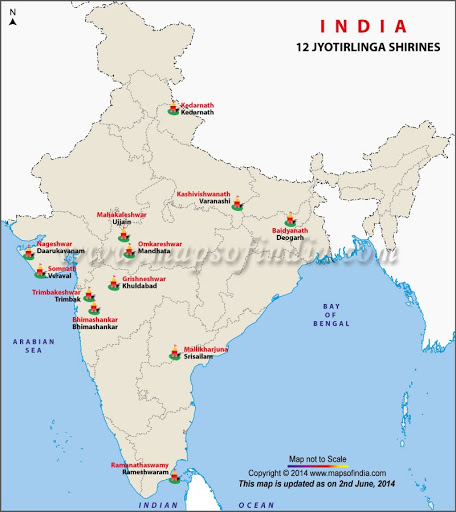
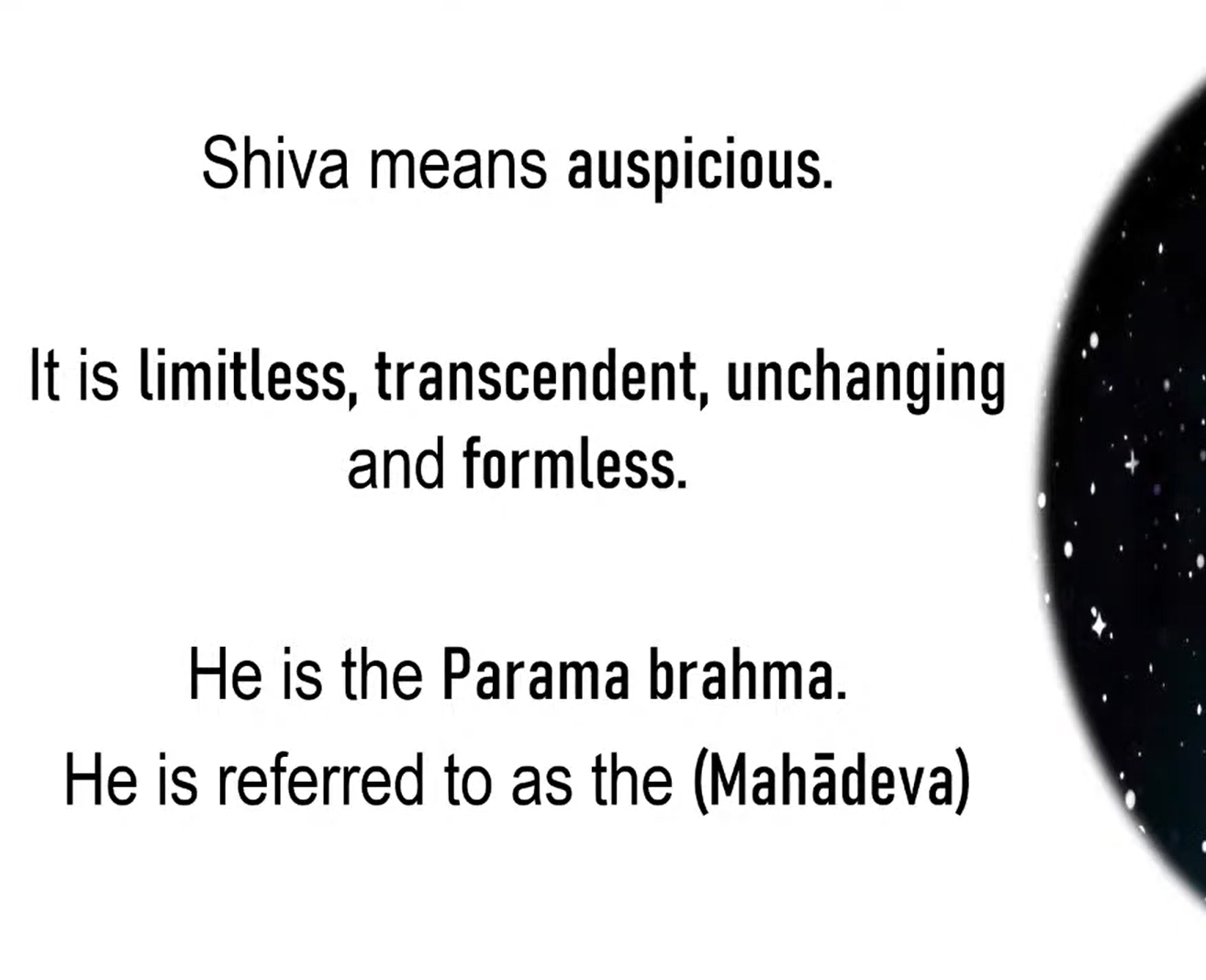

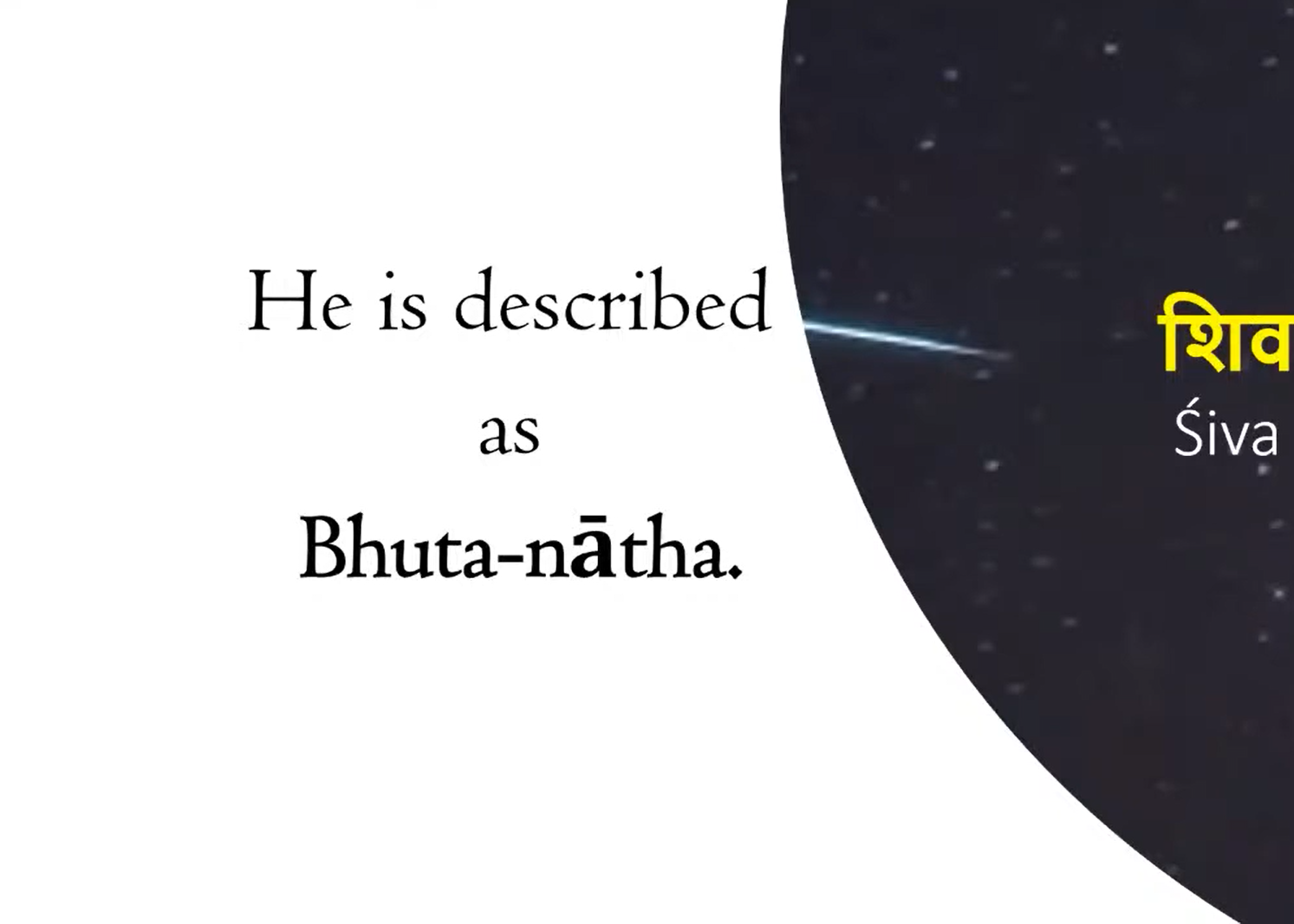
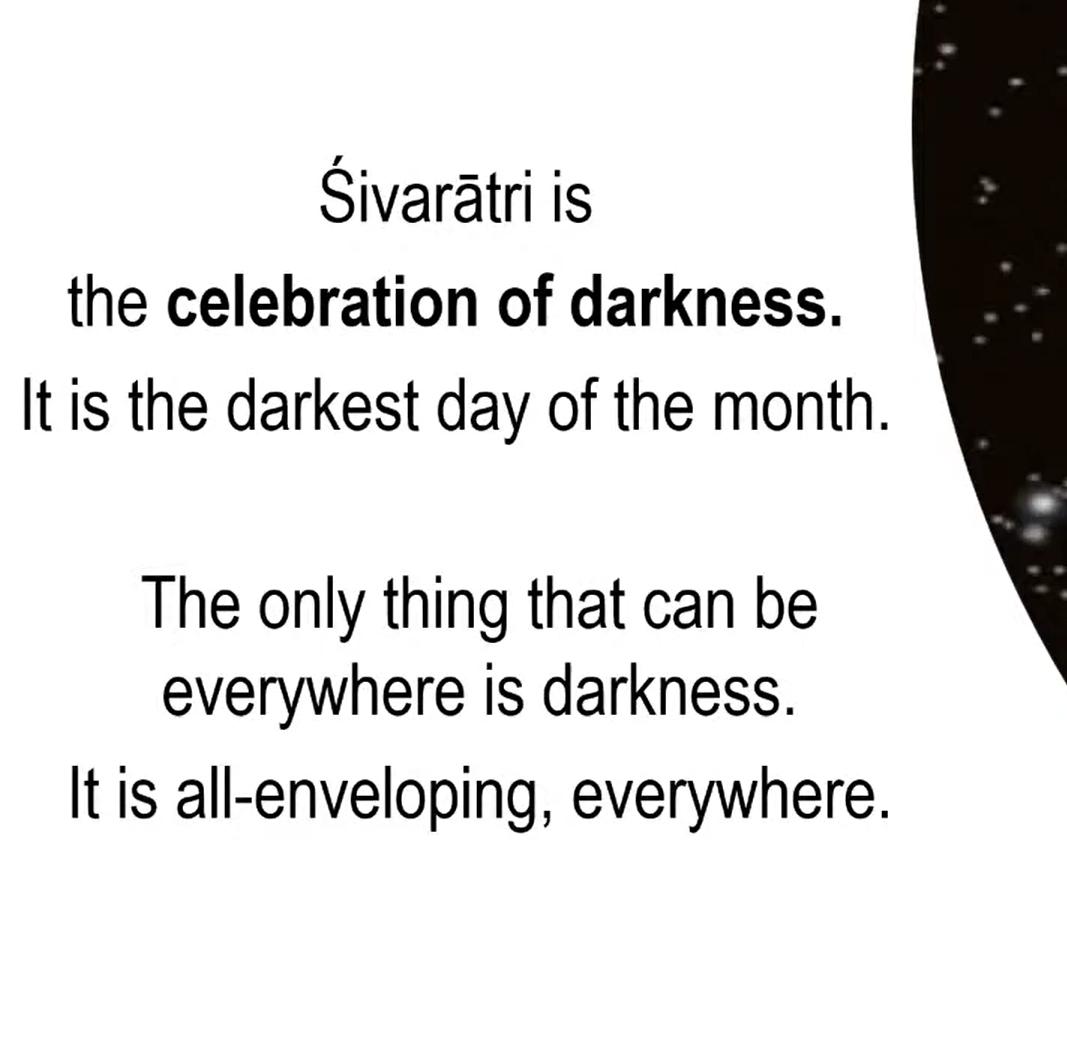
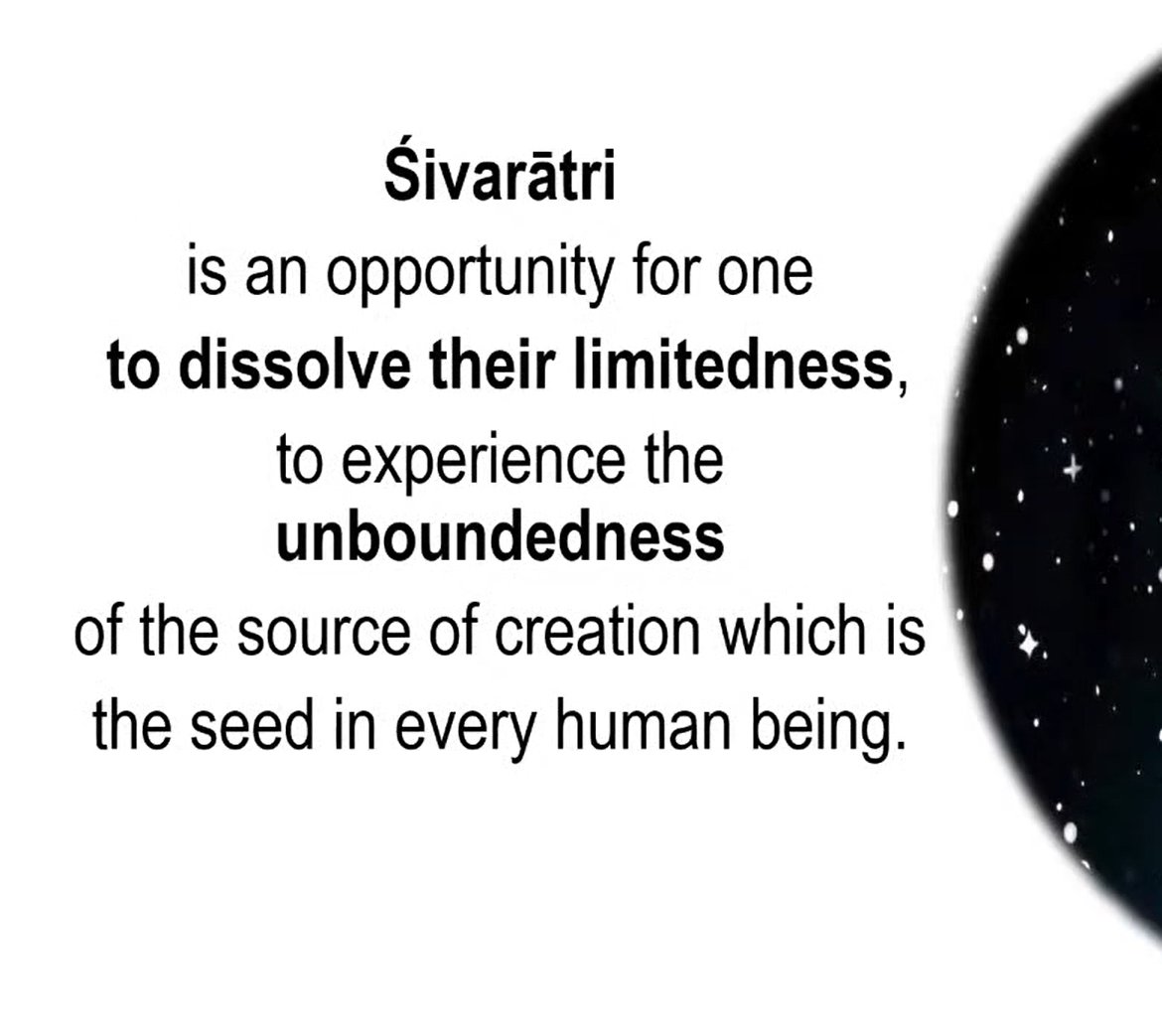
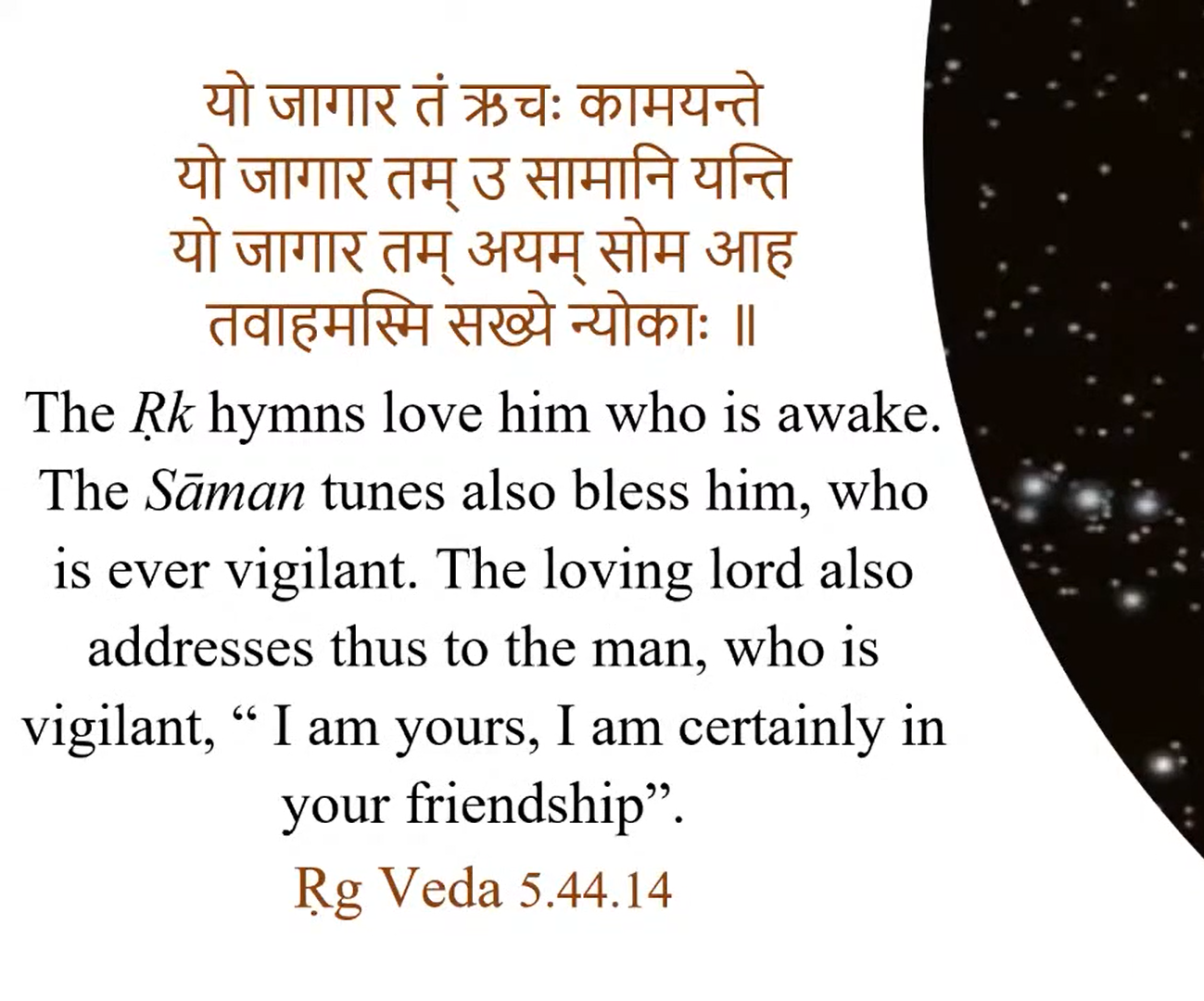


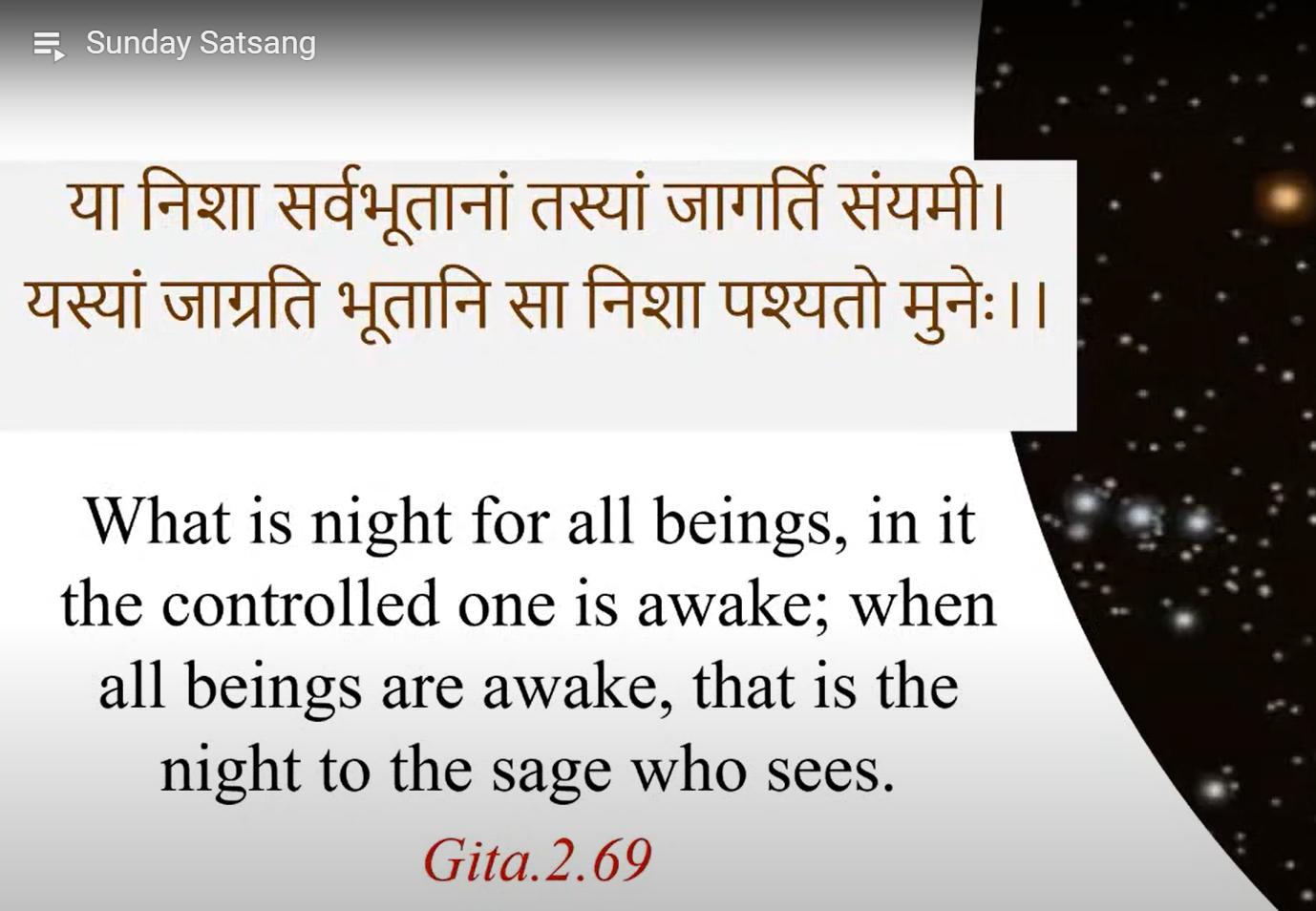

Rishi Bodh Utsav
Maharishi Swamy Dayananda Saraswati Rishi Bodh Utsav is the day when Swamy Dayanand Saraswati was enlightened.
.png)
.png)
The Maharishi laid the foundation of Arya Samaj in the year 1875 with the purpose of propagating his mission, which was two-fold. Firstly, to educate the people to accept the supremacy of one Creator and secondly to free the mankind from the shackles of ignorance and the ethos of superstition.
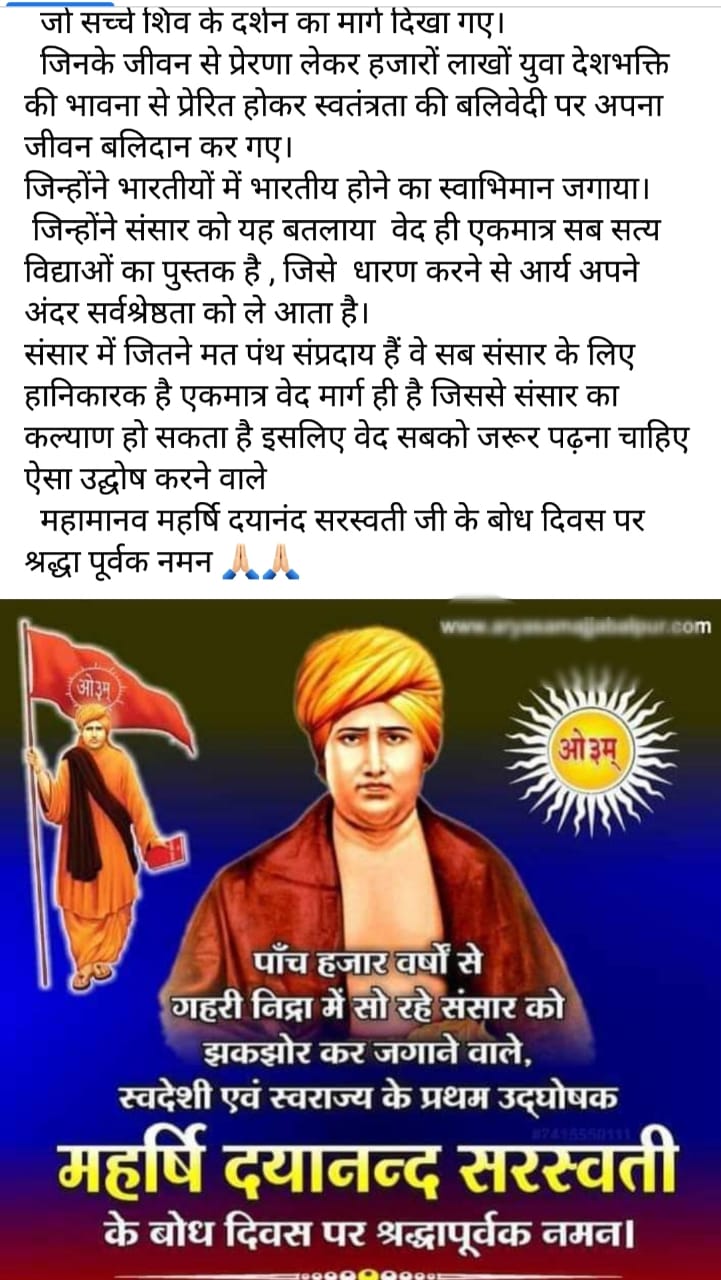
.png)
Whatsapp forwards:
An Introduction to Lord Shiva
The Destroyer
Known by many names:
- Mahadeva,
- Mahayogi,
- Pashupati,
- Nataraja,
- Bhairava,
- Vishwanath,
- Bhava,
- Bhole Nath
Lord Shiva is perhaps the most complex of Hindu deities, and one of the most powerful. Shiva is 'shakti' or power;
Shiva is the destroyer—the most powerful god of the Hindu pantheon and one of the godheads in the Hindu Trinity, along with Brahma and Vishnu. As recognition of this fact, Hindus isolate his shrine separate from those of other deities in the temple.
Shiva as Phallic Symbol:
In temples, Shiva is usually is depicted as a phallic symbol, the 'linga,' which represents the energies necessary for life on both the microcosmic and the macrocosmic levels—both the world in which we live and the world which constitutes the whole of the universe. In a Shaivite temple, the 'linga' is placed in the center underneath the spire, where it symbolizes the navel of the earth.
The popular belief is that the Shiva Linga or Lingam represents the phallus, the generative power in nature. But according to Swami Sivananda, this is not only a serious mistake but also a grave blunder.
A Unique Deity:
The actual image of Shiva is also uniquely different from other deities: his hair is piled high on the top of his head, with a crescent tucked into it and the river Ganges tumbling from his hair. Around his neck is a coiled serpent representing Kundalini, the spiritual energy within life. He holds a trident in his left hand, in which is bound the 'damroo' (small leather drum). He sits on a tiger skin and on his right is a water pot. He wears the 'Rudraksha' beads, and his whole body is smeared with ash. Shiva is also often portrayed as the supreme ascetic with a passive and composed disposition. Sometimes he is depicted riding a bull called Nandi, decked in garlands. A very complicated deity, Shiva is one of the most fascinating of Hindu gods.
The Destructive Force:
Shiva is believed to be at the core of the centrifugal force of the universe, due to his responsibility for death and destruction. Unlike the godhead Brahma the Creator, or Vishnu the Preserver, Shiva is the dissolving force in life. But Shiva dissolves to create since death is necessary for rebirth into a new life. So the opposites of life and death, creation and destruction, both reside in his character.
The God Who's Always High:
Since Shiva is regarded as a mighty destructive power, to numb his negative potentials, he is fed with opium and is also termed as 'Bhole Shankar'— one who is oblivious of the world. Therefore, on Maha Shivratri, the night of Shiva worship, devotees, especially the men, prepare an intoxicating drink called 'Thandai' (made from cannabis, almonds, and milk), sing songs in praise of the Lord and dance to the rhythm of the drums.
According to Hindu mythology, during the Puranic Age, Gods and Goddesses were glorified as supreme beings in various eulogizing texts full of amazing stories - in the Puranas.
The Shiva Purana
In the Shiva Purana, Lord Shiva is celebrated in the five elements of Nature governed by him :
-
- Earth,
- -Water,
- -Fire,
- -Air,
- -Space,
Each of these elements is symbolized and worshiped in the form of a Linga, the formless form of Shiva.
The Shiva Purana also mentions 64 manifestations of Lord Shiva. Prof. K. Venkatachari, a noted artist, in his book Manifestations of Lord Shiva, brings to life a dozen such manifestations through beautiful illustrations.
Here we bring to you some of the most fascinating forms of Shiva - the God of Destruction.
Lord Shiva is the Destroyer in the Holy Trinity, the others being Brahma the Creator and Vishnu the Preserver.
The Complete List of 19 Avatars of Lord Shiva:
To sustain law and balance of nature Lord Shiva took many avatars in various yugas. In Shiva Purana, the following 19 Avatars of Shiva are mentioned.
Adi Shankaracharya said, “Forgive me Oh, Shiva! My three great sins! I came on a pilgrimage to Kashi forgetting that, you are omnipresent. In thinking about you, I forgot that You are beyond thought. In praying to you, I forgot that You are beyond words.”
- Piplaad Avatar
Lord Shiva took birth in the house of Rishi Dadhichi as Piplaad. But the sage is said to have left the house due to the positioning of the Shani. So, Piplaad cursed Shani and caused the planet to fall from its celestial abode. Later, he forgave Shani on a condition that the planet would never trouble anyone before 16 years of age. Hence, worshipping the Piplaad form of Lord Shiva helps to get rid of Shani dosha.
- Nandi Avatar
Lord Shiva is seen as the protector of the herds. He is depicted as bull faced with four hands. The two hands are seen holding an axe and an antelope
- Veerabhadra Avatar
Veerabhadra came to be after Goddess Sati immolated herself at the Daksha yagna. Lord Shiva became extremely furious. Lord Shiva plucked a hair strand from his head and threw it on the ground. It was from the hair strand that Veerbhadra and Rudrakali were born. This fierce avatar is said to have broken the sacrificial vessels, polluted the offerings, insulted the priests and finally cut off Daksha’s head, trampled on Indra, broke the staff of Yama, scattered the gods on every side; then he returned to Kailash.
- Sharabha Avatar
Shiva Purana narrates that god Shiva assumed the Avatar of Sharabha (part bird part lion) to tame Narasimha – the fierce man-lion avatar of Vishnu. This form is popularly known as Sarabeshwara (Lord Sarabha) or Sharabeshwaramurti.
- Ashwatthama
Ashwatthama is said to be the “The Vish Purush” sprung out of Shiva after he took Halahal during Samundra Manthan. He was granted a blessing that he would be able to kill oppressive kshatriyas. He will be born as Bhardwaja’s grandson and be raised as Brahman but attracted to Kshatriyahood. This Vish purush was born as Ashwatthama to Drona and Kripi.
- Bhairava Avatar
Bhairava avatar was created when Lord Brahma lied about his quest for superiority, Shiva took the form of Bhairava and cut off Lord Brahma’s fifth head. Severing a Brahma’s head made Lord Shiva guilty of the crime of killing a Brahmin (Brahma hatya) and hence Shiva had to carry the skull of Brahma for twelve years and roam as a Bhikshatana. In this form, Shiva is said to guard all the Shakti Peethas.
- Durvasa Avatar
Lord Shiva had taken the avatar of Durvasa on the earth to maintain the discipline of the universe. Durvasa was a great sage known for his short temper.
- Grihapati Avatar
Lord Shiva was born to a great devotee of Lord Shiva, Shuchismati was his devoted wife who yearned to birth a child, like Shiva. The child was well versed in all the Vedas yet was informed had to die young due to planetary positions. His journey to Kashi was dampened by Indra but Lord Shiva came to his defense and Lord Shiva blessed Grihapati by saying “even Kaalvajra would not be able to kill you.” Grihapati became very pleased. The Shivalinga which he worshipped, later on, became famous as ‘Agnishwar linga’. Lord Shiva made Grihapati the lord of all the directions.
- Lord Hanuman
Lord Shiva was so infatuated by the appearance of Lord Vishnu in his form of Mohini during Samudra Manthan that his semen was released on the ground. This semen was established by the Saptarishis in the womb of Anjani, with the permission of Lord Shiva himself. In this way was born the mighty Hanuman.
- Vrishabha Avatar
During Samundra Manthan Vishnu tricked all the asuras by creating an illusion of enchanting beauties. When the asuras saw them, they forcibly carried these enchanting beauties to their abode – Patal Lok. After that, they again returned to take control of the Nectar which had been taken by the gods. While Vishnu went to annihilate them in Patal loka he himself got caught up in the Maya and fathered many immoral sons there who created a ruckus for the Gods. It was then Lord Shiva took the form of an ox or Vrishabha and killed all the cruel sons of Lord Vishnu. Lord Vishnu came to fight the ox but after recognizing that it was Lord Shiva’s incarnation, he left the fight and returned to his abode.
- Yatinath Avatar
Yatinath Avatar – There was once a tribal man named Aahuk. He and his wife were ardent devotees of Lord Shiva. One day Lord Shiva visited them in the form of Yatinath. Their small hut couldn’t accommodate lord Shiva guised as a guest, so Aahuk decided to sleep outside. Unfortunately, he was killed by a wild animal outside. This wife decided to take her own life but was blessed by Lord shiva that they would be born as Nala and Damyanti in the next life and Shiva would unite them.
- Krishna Darshan avatar
Lord Shiva took the incarnation of Krishna Darshan avatar to highlight the importance of yagna and rituals in a person’s life. A prince, Nabhag who was kept from his share of the kingdom by his brothers had been asked by his father to educate a sage to get rid of all his attachments to successfully conduct a yajna. When the task is completed the Sage, Angiras pleased hands him all the wealth which is stopped by Krishan Darshan Avataar of Shiva. He showed Nabhag the significance of higher spiritual attainment and salvation and hence gave blessings.
- Bhikshuvarya Avatar
This incarnation of Lord Shiva protects human beings from all kinds of dangers.
- Sureshwar Avatar
Lord Shiva and Goddess Parvati appeared in front of the son of sage Vyaghrapaad, Upamanyu disguised as Indra and Indrani respectively. To test his devotion, both of them told Upamanyu to stop doing penance and stop worshiping Shiva. Upamanyu was enraged and refused even after being cursed by them. Shiva and Parvati were satisfied by his total dedication and devotion Shiva promised Upamanyu that he would be present in the vicinity of his hermitage along with Parvati forever. Lord Shiva got the name ‘Sureshwar’ because he appeared in the guise of Indra.
- Kirateshwar Avatar
Lord Shiva descended in the form of a hunter or Kirat while Arjuna was meditating to kill an Asura named Mooka, disguised as boar. Arjun’s meditation got disturbed by the sound and upon seeing the boar, Arjun and the Kirat struck the boar at the same time with arrows. A fight broke between the Keerat and Arjuna as to who struck the boar first. Arjuna challenged Lord Shiva in the form of Keerat for a duel. Lord Shiva was pleased by Arjuna’s valour and gifted him his Pashupata Astra.
- Suntantarka Avatar
Lord Shiva took this incarnation to ask the hand of Parvati in marriage from her father Himalaya.
- Brahmachari Avatar
It was in Brahmachari Avatar, that Lord Shiva had tested Pārbati’s determination to marry him.
- Yaksheshwar Avatar
When the deities after defeating the Asuras during Samudra Manthan, had become arrogant, Lord Shiva disliked it as pride was not a quality for gods to possess. Lord Shiva then presented some grass before them and asked them to cut it. It was Lord Shiva’s attempt to destroy their false pride through this divine grass. Hence, nobody could cut the grass and the pride vanished. This form of Lord Shiva then came to be known as Yaksheshwar.
- Avadhut Avatar
Avadhut Avatar was an incarnation was taken by Lord Shiva to crush the arrogance of Lord Indra.
Here are the 108 names of the Hindu God Shiva gleaned from the Sri Shiva Ashtotattrashata Namavali mantra. It is believed that devotees, who read, memorize or chant these 108 auspicious names of Shiva with single-minded focus, will receive the blessing of the Lord and be shorn of all sins.
108 Names of Lord Shiva
Ahirbhudhanya: The one who possess the Kundalini
Aja: The one who is boundless
Ambikanatha: Consort of Ambika, the Mother Goddess
Anagha: He who is pure
Ananta: The one who is unending
Andhakasura Sudana: The Lord who killed the demon Andhaka
Anekatma: The God who has many forms
Anishvara: The one who does not have any Lord
Apavargaprada: Lord who gives and takes all things
Ashtamurti: Lord who has eight forms
Avayaya: The one who never subject to change
Avayayat: The one who is unseen
Avyagra: Lord who is steady and unwavering
Bhagnetrabhid: The Lord who damaged Bhaga's eye
Bhagwan: The Lord of prosperity
Bhaktavatsala: The Lord who is always on the side his devotees
Bharga: Lord who ends all sins
Bhasmodhulitavigrah: The one who applies ashes all over the body
Bhava: The God who is existence itself
Bheema: The one who has a fearful form
Bhootapati: Lord of the Panchabhoota and evil spirits
Bujangabhushana: Lord adorned with the golden snake
Charuvikrama: The guardian of wandering pilgrims
Dakshadhwarahara: Destroyer of Daksha's conceited sacrifice or yajna
Deva: Lord of the devas or demigods
Digambara: Shiva whose robes is the cosmos
Durdharsha: The One who is unconquerable
Gananatha: God of the ganas
Gangadhar: The God who holds the Ganges river in his hair
Giridhanva: God whose weapon is a mountain
Giripriya: Lord who is fond of the mountains
Giriraj: King of the mountains
Girisha: The God who sleeps on Kailash mountain
Hara: The Lord who dissolves all bondage and sins
Hari: Same as Lord Vishnu
Havi: He who is wealthy in the form of ahuti
Hiranyareta: The one who emanates golden souls
Jagadguru: Guru of the universe
Jagadvyapi: God who permeates the entire world
Jattadhar: The God with matted locks or jata
Kailashavasi: Native of Kailash
Kalakal: One who is the death of deaths
Kamari: Enemy of Kamadeva
Kapali: One who wears a necklace of skulls
Kapardi: The Lord with thickly matted hair
Kathor: The God who has a strong body
Kawachi: The God who is armored
Khandaparshu: Lord with the broken axe
Khatvangi: The God who carries a knurled club or khatvanga
Kripanidhi: The God who is the treasure of compassion
Krittivas: God who wears clothes of elephant skin
Lalataksha: One who has an eye in the forehead
Mahadeva: Greatest of the Gods
Mahasenajanaka: Father of Kartikeya
Maheshwara: Lord of Gods
Mrida: The Lord who shows mercy
Mrigpani: Shiva with deer in hands
Mrityunjay: Lord who conquers death
Nilalohit: The one with red and blue colors
Panchavaktra: God of the five activities
Paramatma: Everyone's own soul
Parameshwar: The Great God
Parshuhasta: The God who holds axe in hands
Pashupati: Lord of animals
Pashvimochana: Lord who releases all fetters
Pinakin: One who has a bow in his hand
Prajapati: The creator of dynasty
Pramathadhipa: God who is served by goblins
Purarati: Destroyer of the enemy
Pushadantabhit: One who punished Pushan
Rudra: The one who gets sad by the pain of devotees
Sadashiva: The one who is eternally auspicious
Sahasrapada: The Lord who is standing and walking everywhere
Sahsraksha: One who has limitless forms
Samapriya: The one who loves with equality
Sarvagya: The one who knows everything
Satvik: Lord of boundless energy
Shambhu: One who bestows prosperity
Shankar: One who gives happiness and prosperity
Sharva: Remover of all troubles
Shashi Shekhar: The God who wears the crescent moon in his hair
Shashvat: Lord who is eternal and endless
Shipivishta: The Lord whose form emits great rays of light
Shitikantha: The Lord who has a white neck
Shiva: The Lord who is always pure
Shivapriya: Beloved of Parvati, the Mother Goddess
Shrikantha: The one of glorious neck
Shuddhavigraha: Lord of pure soul
Shulapani: The one who carries a trident
Som: The one who includes the form of Uma or Goddess Durga
Somasuryaagnilochana: The one who has eyes in the form of the sun, the moon, and fire
Sthanu: The firm and immovable deity
Sukshamatanu: God who has a subtle body
Swaramayi: The God who lives in all seven notes of music
Tarak: The Lord who is great liberator of mankind
Trayimurti: Shiva who possesses the Veda form
Trilokesha: The Lord of all the three worlds
Tripurantak: The God who killed the demon Tripurasura
Ugra: The One who has extremely fierce nature
Vamadeva: The God who is pleasing and auspicious in every way
Veerabhadra: Who is violent , yet peaceful
Virupaksha: The Shiva with oblique eyes
Vishnuvallabha: The one who is dear to Lord Vishnu
Vishveshwara: Lord of the universe
Vrishanka: The God who has a flag with a symbol of bull
Vrishbharudh: The one who rides bull
Vyomakesh: Whose hair spreads in the sky
Yagyamaya: The architect of all sacrificial rites
The Real Meaning of the Shiva's Linga Symbol
The Often Misunderstood Icon
The Shiva Linga or Lingam is a symbol that represents Lord Shiva in Hinduism. As the most powerful of deities, temples are built in his honor that includes a Shiva Linga, representing all the energies of the world and beyond.
The popular belief is that the Shiva Linga represents the phallus, the emblem of the generative power in nature. According to followers of Hinduism, their teachers have taught that this is not only a mistake, but also a grave blunder. Such a stance, for example, can be found in the teachings of Swami Sivananda,
In addition to the Hindu tradition, the Shiva Linga has been adopted by a number of metaphysical disciplines. In this case, it refers to a particular stone from an Indian river that is believed to have healing powers for the mind, body, and soul.
To understand these dual uses for the words Shiva Linga, let's approach them one at a time and begin with the origin. They are completely different but connected in their underlying meaning and connection to Lord Shiva.
Shiva Linga: The Symbol of Shiva
In Sanskrit, Linga means a "mark" or a symbol, which points to an inference. Thus the Shiva Linga is a symbol of Lord Shiva: a mark that reminds of the Omnipotent Lord, which is formless.
Shiva Linga speaks to the Hindu devotee in the unmistakable language of silence. It is only the outward symbol of the formless being, Lord Shiva, who is the undying soul seated in the chambers of your heart. He is your in-dweller, your innermost self or Atman, and he is also identical with the supreme Brahman.
The Linga as a Symbol of Creation
The ancient Hindu scripture "Linga Purana" says that the foremost Linga is devoid of smell, color, taste, etc., and is spoken of as Prakriti, or Nature itself. In the post-Vedic period, the Linga became symbolical of the generative power of Lord Shiva.
The Linga is like an egg and represents the Brahmanda (the cosmic egg). Linga signifies that the creation is affected by the union of Prakriti and Purusha, the male and the female powers of Nature. It also signifies Satya, Jnana, and Ananta—Truth, Knowledge, and Infinity. A Shiva Linga consists of three parts. The lowest of these is called the Brahma-Pitha; the middle one, the Vishnu-Pitha; the uppermost one, the Shiva-Pitha. These are associated with the Hindu pantheon of gods: Brahma (the Creator), Vishnu (the Preserver), and Shiva (the Destroyer).
The typically circular base or peetham (Brahma-Pitha) holds an elongated bowl-like structure (Vishnu-Pitha) reminiscent of a flat teapot with a spout that has had the top cut off. Within the bowl rests a tall cylinder with a rounded head (Shiva-Pitha). It is in this portion of the Shiva Linga that many people see a phallus.
The Shiva Linga is most often carved from stone. In Shiva Temples, they can be quite large, towering over devotees, though Lingum can also be small, close to knee-height. Many are adorned with traditional symbols or elaborate carvings, though some are somewhat industrial looking or relatively plain and simple.
The Holiest Shiva Lingas of India Of all the Shiva Lingas in India, a few stand out as holding the most importance. The temple of Lord Mahalinga at Tiruvidaimarudur, known also as Madhyarjuna, is regarded as the great Shiva temple of South India.
There are 12 Jyotir-lingas and five Pancha-bhuta Lingas in India.
Jyotir-lingas: Found in -
- Kedarnath,
- Kashi Vishwanath,
- Somnath,
- Baijnath,
- Rameswar,
- Ghrusneswar,
- Bhimshankar,
- Mahakal,
- Mallikarjun,
- Amaleshwar,
- Nageshwar,
- Tryambakeshwar
Pancha-bhuta Lingas: Found in -
- Kalahastishwar,
- Jambukeshwar,
- Arunachaleshwar,
- Ekambareshwar of Kanjivaram,
- Nataraja of Chidambaram
The Quartz Shiva Linga:
The Sphatika-linga is made of quartz. It is prescribed for the deepest kind of worship of Lord Shiva. It has no color of its own but takes on the color of the substance which it comes in contact with. It represents the Nirguna Brahman, the attribute-less Supreme Self or the formless Shiva.
What the Linga Means to Hindu Devotees
There is a mysterious or indescribable power (or Shakti) in the Linga. It is believed to induce concentration of the mind and help focus one's attention. That is why the ancient sages and seers of India prescribed Linga to be installed in the temples of Lord Shiva.
For a sincere devotee, the Linga is not merely a block of stone, it is all-radiant. It talks to him, raises him above body-consciousness, and helps him communicate with the Lord. Lord Rama worshiped the Shiva Linga at Rameshwaram. Ravana, the learned scholar, worshiped the golden Linga for its mystical powers.
The Shiva Lingam of Metaphysical Disciplines
Taking from these Hindu beliefs, the Shiva Lingam referenced by metaphysical disciplines refer to a specific stone. It is used as a healing stone, particularly for sexual fertility and potency as well as overall well-being, power, and energy.
Practitioners in healing crystals and rocks believe the Shiva Lingam to be among the most powerful. It is said to bring balance and harmony to those who carry it and have great healing energy for all seven chakras.
Its Physical Shape
Physically, the Shiva Linga in this context is quite different from that of Hindu tradition. It is an egg-shaped stone of brown shades that is gathered from the Narmada River in the sacred Mardhata mountains. Polished to a high sheen, locals sell these stones to spiritual seekers all over the world. They can vary in size from one-half an inch in length to several feet. The markings are said to represent those found on the Lord Shiva's forehead.
Those who use the Shiva Lingam see in it a symbol of fertility: the phallus representing the male and the egg the female. Together, they represent the fundamental creation of life and of Nature itself as well as a fundamental spiritual balance.
The Lingam stones are used in meditation, carried with the person throughout the day, or used in healing ceremonies and rituals.
The Most Popular Stories of Shiva, the Destroyer
Lord Shiva is one of three principle Hindu deities, along with Brahma and Vishnu. Especially in Shavais—one of the four main branches of Hinduism, Shiva is regarded as the Supreme Being responsible for creation, destruction, and everything in between. For other Hindu sects, Shiva's reputation is as the Destroyer of Evil, existing on equal footing with Brahma and Vishnu. It is no surprise, then, that legends and mythological tales surround Lord Shiva abound. Here are a few of the most popular ones:
The Creation of the Ganges River
A legend from the Ramayana speaks of King Bhagirath, who once meditated before Lord Brahma for a thousand years for the salvation of the souls of his ancestors. Pleased with his devotion, Brahma granted him a wish; the king then requested that the Lord send the river goddess Ganges down to earth from heaven so that she could flow over his ancestors' ashes and wash their curse away and allow them to go to heaven.
Brahma granted his wish but requested that the king first pray to Shiva, for Shiva alone could support the weight of Ganga's descent. Accordingly, King Bhagrirath prayed to Shiva, who agreed that Ganga could descend while entwined in the locks of his hair. In one variation of the story, an angry Ganga tried to drown Shiva during the descent, but the Lord powerfully held her motionless until she relented. After meandering down through Shiva's thick matted locks, the holy river Ganges appeared on earth.
For modern Hindus,
-this legend is re-enacted by a ceremonial ritual known as bathing the Shiva Lingam.
The Tiger and the Leaves:
Once a hunter who was chasing a deer wandered into a dense forest found himself on the banks of river Kolidum, where he heard the growl of a tiger. To protect himself from the beast, he climbed up a tree nearby. The tiger pitched itself on the ground below the tree, demonstrating no intention to leave. The hunter stayed up in the tree all night and to keep himself from falling asleep, he gently plucked one leaf after another from the tree and threw it down.
Under the tree was a Shiva Linga, and the tree blessedly turned out to be a bilva tree. Unknowingly, the man had pleased the deity by casting bilva leaves down upon the ground. At sunrise, the hunter looked down to find the tiger gone, and in its place stood Lord Shiva. The hunter prostrated himself before the Lord and attained salvation from the cycle of birth and death.
To this day, bilva leaves are used by modern believers in ritual devotions to Shiva. The leaves are thought to cool the deity's fierce temperament and to resolve even the worst karmic debt.
Shiva as a Phallus:
According to another legend, Brahma and Vishnu, the two other deities of the holy Trinity, once had an argument over who was more supreme. Brahma, being the Creator, declared himself to be more revered, while Vishnu, the Preserver, pronounced that it was he commanded more respect.
Just then a colossal lingam (Sanskrit for phallus) in the form of an infinite pillar of light, known as a Jyotirlinga, appeared blanketed in flames before them. Both Brahma and Vishnu were awestruck by its rapidly increasing size, and, forgetting their quarrel, they decided to determine its dimensions. Vishnu assumed the form of a boar and went to the netherworld, while Brahma became a swan and flew to the skies, but neither was able to fulfill their task. Suddenly Shiva appeared out of the lingam and stated that he was the progenitor of both Brahma and Vishnu, and that henceforth he should be worshiped in his phallic form, the lingam, and not in his anthropomorphic form.
This tale is used to explain why Shiva is often represented iconically in the form of a Shiva Linga carving in Hindu devotions.
Nataraja or Nataraj, the dancing form of Lord Shiva, is a symbolic synthesis of the most important aspects of Hinduism, and the summary of the central tenets of this Vedic religion. The term 'Nataraj' means 'King of Dancers' (Sanskrit nata = dance; raja = king). In the words of Ananda K. Coomaraswamy, Nataraj is the "clearest image of the activity of God which any art or religion can boast of…A more fluid and energetic representation of a moving figure than the dancing figure of Shiva can scarcely be found anywhere," (The Dance of Shiva)
The Origin of the Nataraj Form
An extraordinary iconographic representation of the rich and diverse cultural heritage of India, it was developed in southern India by 9th and 10th-century artists during the Chola period (880-1279 CE) in a series of beautiful bronze sculptures. By the 12th century AD, it achieved canonical stature and soon the Chola Nataraja became the supreme statement of Hindu art.
The Vital Form and Symbolism
In a marvelously unified and dynamic composition expressing the rhythm and harmony of life, Nataraj is shown with four hands represent the cardinal directions. He is dancing, with his left foot elegantly raised and the right foot on a prostrate figure—'Apasmara Purusha', the personification of illusion and ignorance over whom Shiva triumphs. The upper left-hand holds a flame, the lower left-hand points down to the dwarf, who is shown holding a cobra. The upper right-hand holds an hourglass drum or 'dumroo' that stands for the male-female vital principle, the lower shows the gesture of assertion: "Be without fear."
Snakes that stand for egotism, are seen uncoiling from his arms, legs, and hair, which is braided and bejeweled. His matted locks are whirling as he dances within an arch of flames representing the endless cycle of birth and death. On his head is a skull, which symbolizes his conquest over death. Goddess Ganga, the epitome of the holy river Ganges, also sits on his hairdo. His third eye is symbolic of his omniscience, insight, and enlightenment. The whole idol rests on a lotus pedestal, the symbol of the creative forces of the universe.
The Significance of Shiva's Dance
This cosmic dance of Shiva is called 'Anandatandava,' meaning the Dance of Bliss, and symbolizes the cosmic cycles of creation and destruction, as well as the daily rhythm of birth and death. The dance is a pictorial allegory of the five principle manifestations of eternal energy—creation, destruction, preservation, salvation, and illusion. According to Coomaraswamy, the dance of Shiva also represents his five activities: 'Shrishti' (creation, evolution); 'Sthiti' (preservation, support); 'Samhara' (destruction, evolution); 'Tirobhava' (illusion); and 'Anugraha' (release, emancipation, grace).
The overall temper of the image is paradoxical, uniting the inner tranquility, and outside activity of Shiva.
A Scientific Metaphor
Fritzof Capra in his article "The Dance of Shiva: The Hindu View of Matter in the Light of Modern Physics," and later in The Tao of Physics beautifully relates Nataraj's dance with modern physics. He says that "every subatomic particle not only performs an energy dance but also is an energy dance; a pulsating process of creation and destruction…without end…For the modern physicists, then Shiva's dance is the dance of subatomic matter. As in Hindu mythology, it is a continual dance of creation and destruction involving the whole cosmos; the basis of all existence and of all natural phenomena."
The Nataraj Statue at CERN, Geneva
In 2004, a 2m statue of the dancing Shiva was unveiled at CERN, the European Center for Research in Particle Physics in Geneva. A special plaque next to the Shiva statue explains the significance of the metaphor of Shiva's cosmic dance with quotations from Capra: "Hundreds of years ago, Indian artists created visual images of dancing Shivas in a beautiful series of bronzes. In our time, physicists have used the most advanced technology to portray the patterns of the cosmic dance. The metaphor of the cosmic dance thus unifies ancient mythology, religious art, and modern physics."
To sum up, here's an excerpt from a beautiful poem by Ruth Peel:
- The source of all movement,
- Shiva's dance,
- Gives rhythm to the universe.
- He dances in evil places,
- In sacred,
- He creates and preserves,
- Destroys and releases.
We are part of this dance
This eternal rhythm,
And woe to us if, blinded
By illusions,
We detach ourselves
From the dancing cosmos,
This universal harmony…"
भारत में ऐसे शिव मंदिर है जो केदारनाथ से लेकर रामेश्वरम तक एक सीधी रेखा में बनाये गये है। आश्चर्य है कि हमारे पूर्वजों के पास ऐसा कैसा विज्ञान और तकनीक था जिसे हम आज तक समझ ही नहीं पाये? उत्तराखंड का केदारनाथ, तेलंगाना का कालेश्वरम, आंध्रप्रदेश का कालहस्ती, तमिलनाडू का एकंबरेश्वर, चिदंबरम और अंततः रामेश्वरम मंदिरों को 79° E 41’54” Longitude के भौगोलिक सीधी रेखा में बनाया गया है।
यह सारे मंदिर प्रकृति के 5 तत्वों में लिंग की अभिव्यक्ति का प्रतिनिधित्व करते हैं, जिसे हम आम भाषा में पंच भूत कहते है। पंच भूत यानी पृथ्वी, जल, अग्नि, वायु और अंतरिक्ष। इन्ही पांच तत्वों के आधार पर इन पांच शिव लिंगों को प्रतिष्टापित किया है। जल का प्रतिनिधित्व तिरुवनैकवल मंदिर में है, आग का प्रतिनिधित्व तिरुवन्नमलई में है, हवा का प्रतिनिधित्व कालाहस्ती में है, पृथ्वी का प्रतिनिधित्व कांचीपुरम में है और अतं में अंतरिक्ष या आकाश का प्रतिनिधित्व चिदंबरम मंदिर में है! वास्तु-विज्ञान-वेद का अद्भुत समागम को दर्शाते हैं ये पांच मंदिर।
भौगॊलिक रूप से भी इन मंदिरों में विशेषता पायी जाती है। इन पांच मंदिरों को योग विज्ञान के अनुसार बनाया गया था, और एक दूसरे के साथ एक निश्चित भौगोलिक संरेखण में रखा गया है। इस के पीछे निश्चित ही कॊई विज्ञान होगा जो मनुष्य के शरीर पर प्रभाव करता होगा।
इन मंदिरों का करीब चार हज़ार वर्ष पूर्व निर्माण किया गया था जब उन स्थानों के अक्षांश और देशांतर को मापने के लिए कोई उपग्रह तकनीक उपलब्ध ही नहीं था। तो फिर कैसे इतने सटीक रूप से पांच मंदिरों को प्रतिष्टापित किया गया था? उत्तर भगवान ही जाने।
केदारनाथ और रामेश्वरम के बीच 2383 किमी की दूरी है। लेकिन ये सारे मंदिर लगभग एक ही समानांतर रेखा में पड़ते है। आखिर हज़ारों वर्ष पूर्व किस तकनीक का उपयॊग कर इन मंदिरों को समानांतर रेखा में बनाया गया है यह आज तक रहस्य ही है। श्रीकालहस्ती मंदिर में टिमटिमाते दीपक से पता चलता है कि वह वायु लिंग है। तिरूवनिक्का मंदिर के अंदरूनी पठार में जल वसंत से पता चलता है कि यह जल लिंग है। अन्नामलाई पहाड़ी पर विशाल दीपक से पता चलता है कि वह अग्नि लिंग है। कंचिपुरम के रेत के स्वयंभू लिंग से पता चलता है कि वह पृथ्वी लिंग है और चिदंबरम की निराकार अवस्था से भगवान के निराकारता यानी आकाश तत्व का पता लगता है।
अब यह आश्चर्य की बात नहीं तो और क्या है कि ब्रह्मांड के पांच तत्वों का प्रतिनिधित्व करनेवाले पांच लिंगो को एक समान रेखा में सदियों पूर्व ही प्रतिष्टापित किया गया है। हमें हमारे पूर्वजों के ज्ञान और बुद्दिमत्ता पर गर्व होना चाहिए कि उनके पास ऐसा विज्ञान और तकनीक था जिसे आधुनिक विज्ञान भी नहीं भेद पाया है। माना जाता है कि केवल यह पांच मंदिर ही नहीं अपितु इसी रेखा में अनेक मंदिर होगें जो केदारनाथ से रामेश्वरम तक सीधी रेखा में पड़ते है। इस रेखा को “शिव शक्ति अक्श रेखा” भी कहा जाता है। संभवता यह सारे मंदिर कैलाश को द्यान में रखते हुए बनाया गया हो जो 81.3119° E में पड़ता है!? उत्तर शिवजी ही जाने। ...
कमाल की बात है "महाकाल" से शिव ज्योतिर्लिंगों के बीच कैसा सम्बन्ध है......?? उज्जैन से शेष ज्योतिर्लिंगों की दूरी भी है रोचक- उज्जैन से सोमनाथ- 777 किमी उज्जैन से ओंकारेश्वर- 111 किमी उज्जैन से भीमाशंकर- 666 किमी उज्जैन से काशी विश्वनाथ- 999 किमी उज्जैन से,मल्लिकार्जुन- 999 किमी उज्जैन से केदारनाथ- 888 किमी उज्जैन से त्रयंबकेश्वर- 555 किमी उज्जैन से बैजनाथ- 999 किमी उज्जैन से रामेश्वरम- 1999 किमी उज्जैन से घृष्णेश्वर - 555 किमी
हिन्दु धर्म में कुछ भी बिना कारण के नही होता था । उज्जैन पृथ्वी का केंद्र माना जाता है । जो सनातन धर्म में हजारों सालों से केंद्र मानते आ रहे है इसलिए उज्जैन में सूर्य की गणना और ज्योतिष गण ना के लिए मानव निर्मित यंत्र भी बनाये गये है करीब 2050 वर्ष पहले ।
और जब करीब 100 साल पहले पृथ्वी पर काल्पनिक रेखा (कर्क)अंग्रेज वैज्ञानिक द्वारा बनायीं गयी तो उनका मध्य भाग उज्जैन ही निकला । आज भी वैज्ञानिक उज्जैन ही आते है सूर्य और अन्तरिक्ष की जानकारी के लिये।जय श्री महाँकाल राजा की।
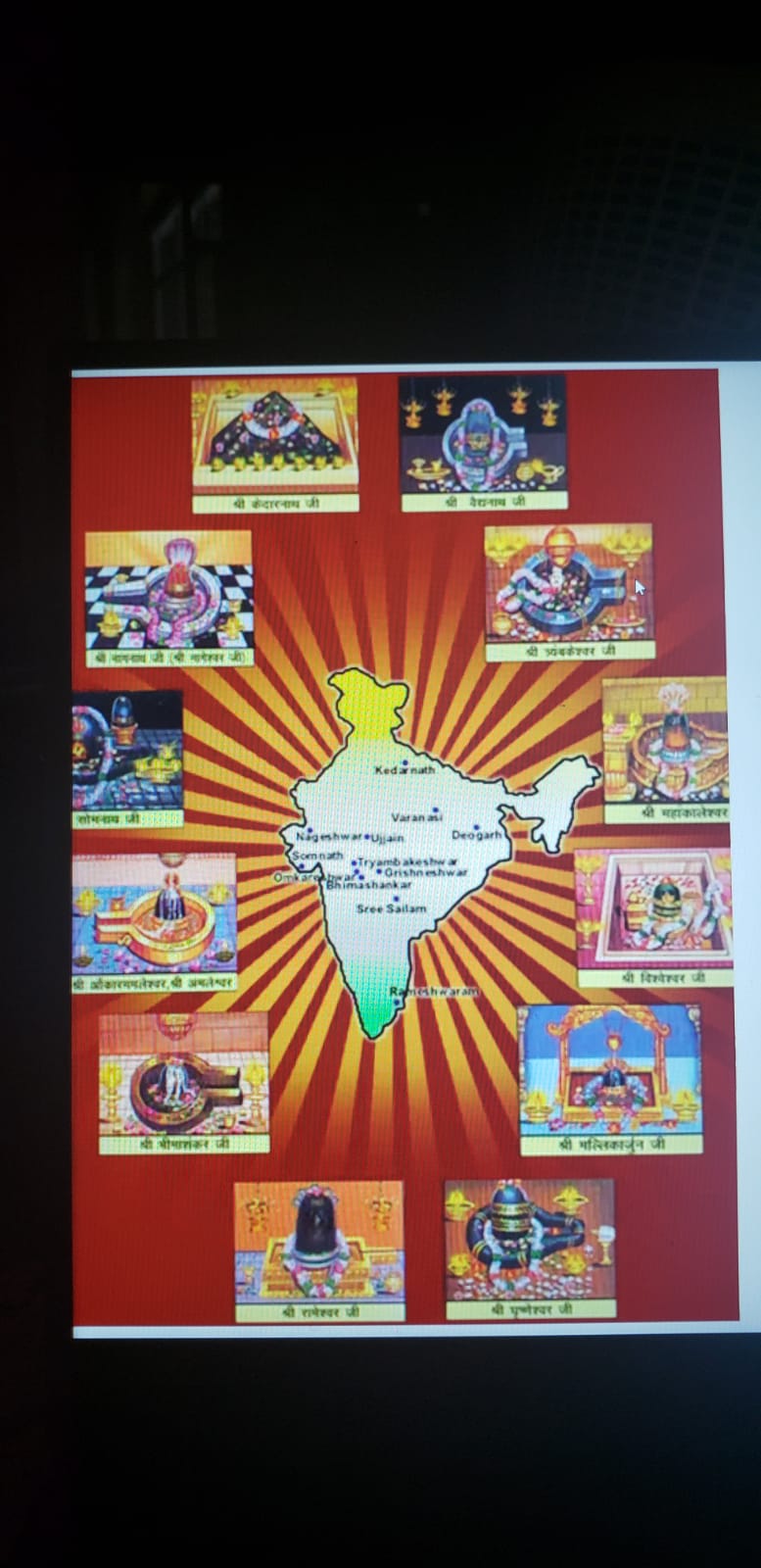
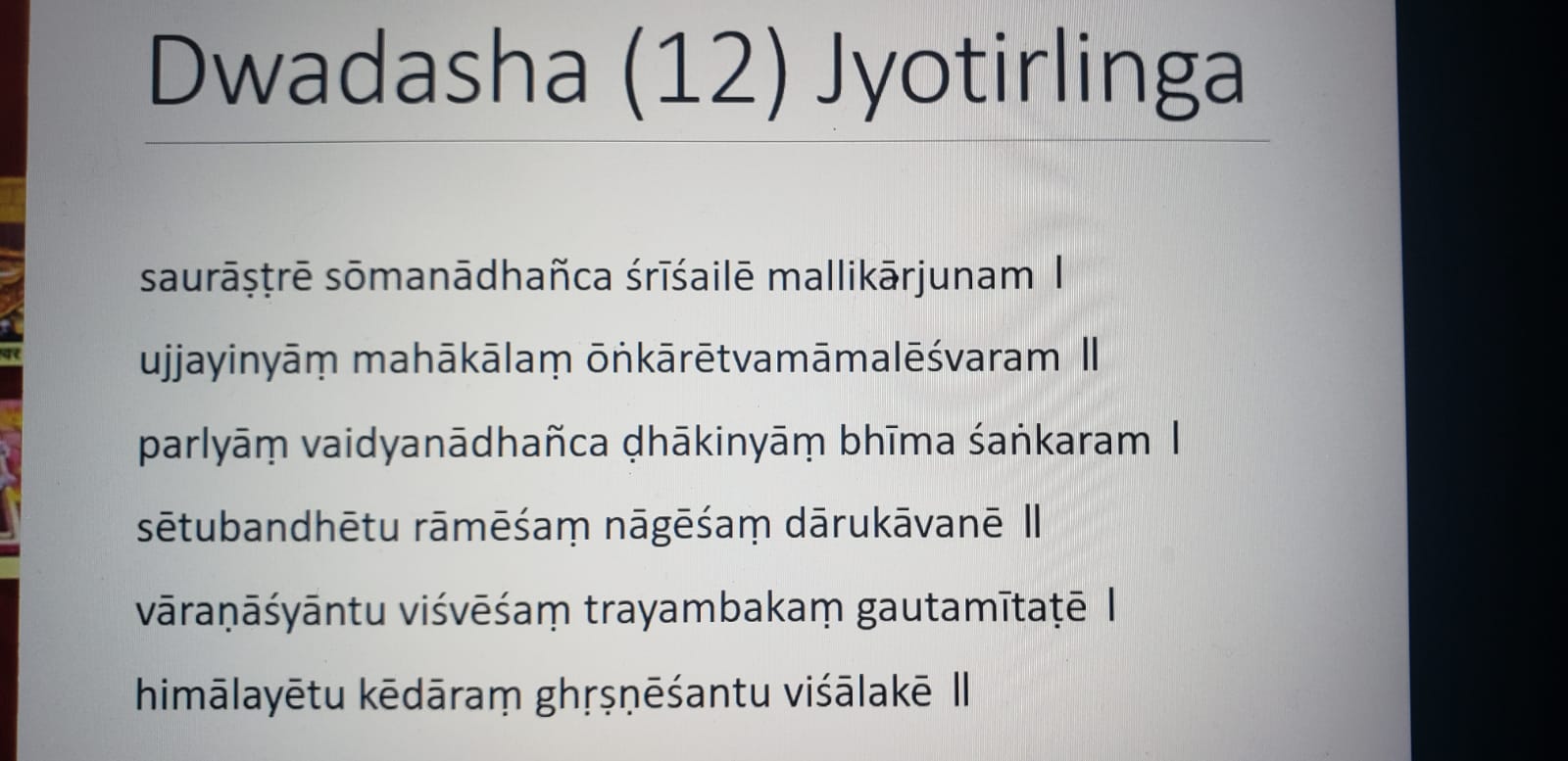
श्री द्वादश ज्योतिर्लिङ्ग स्तोत्रम्:
सौराष्ट्रे सोमनाथंच श्री शैले मल्लिकार्जुनम् |
उज्जयिन्यां महाकालमोंकारममलेश्वरम् ||
परल्यां वैद्यनाथं च डाकिन्यां भीम शंकरम् |
सेतुबन्धे तु रामेशं नागेशं दारुका बने ||
वाराणस्या तु वश्वेशं त्र्यम्बकं गौतमी तटे |
हिमालये तु केदारं घुशमेशं च शिवालये ||
एतानि ज्योतिर्लिंगानि सायं प्रात: पठेन्नर:|
सप्त जन्म कृतं पापं स्मरणेन विनश्यति ||
Somanath in Saurashtra and Mallikarjunam in Shri-Shailam; Mahakaal in Ujjain, Omkareshwar in Amleshwar.Vaidyanath in Paralya and Bhimashankaram in Dakinya; Ramesham (Rameshwaram) in Sethubandh, Nagesham (Nageshwar) in Darauka-Vana. Vishvanath in Vanarasi, Triambakam at bank of the river Gautami ,Kedarnath in Himalayas and Gushmeshwar in Shivalaya (Shiwar). One who recites these Jyotirlingas every evening and morning, gets relieved of all sins committed in past seven births. One, who visits these, gets all his wishes fulfilled by Shiva grace and one's karma gets eliminated as Maheshwara (Shiva) gets satisfied to the worship.
"ॐ जय शिव ओंकारा"
यह वह प्रसिद्ध आरती है जो देश भर में शिव-भक्त नियमित गाते हैं..
लेकिन, बहुत कम लोग का ही ध्यान इस तथ्य पर जाता है कि... इस आरती के पदों में ब्रम्हा-विष्णु-महेश तीनो की स्तुति है..
एकानन (एकमुखी, विष्णु), चतुरानन (चतुर्मुखी, ब्रम्हा) और पंचानन (पंचमुखी, शिव) राजे..
हंसासन(ब्रम्हा) गरुड़ासन(विष्णु ) वृषवाहन (शिव) साजे..
दो भुज (विष्णु), चार चतुर्भुज (ब्रम्हा), दसभुज (शिव) अति सोहे..
अक्षमाला (रुद्राक्ष माला, ब्रम्हाजी ), वनमाला (विष्णु ) रुण्डमाला (शिव) धारी..
चंदन (ब्रम्हा ), मृगमद (कस्तूरी विष्णु ), चंदा (शिव) भाले शुभकारी (मस्तक पर शोभा पाते हैं)..
श्वेताम्बर (सफेदवस्त्र, ब्रम्हा) पीताम्बर (पीले वस्त्र, विष्णु) बाघाम्बर (बाघ चर्म ,शिव) अंगे..
ब्रम्हादिक (ब्राह्मण, ब्रह्मा) सनकादिक (सनक आदि, विष्णु ) प्रेतादिक (शिव ) संगे (साथ रहते हैं)..
कर के मध्य कमंडल (ब्रम्हा), चक्र (विष्णु), त्रिशूल (शिव) धर्ता..
जगकर्ता (ब्रम्हा) जगहर्ता (शिव ) जग पालनकर्ता (विष्णु)..
ब्रह्मा विष्णु सदाशिव जानत अविवेका (अविवेकी लोग इन तीनो को अलग अलग जानते हैं।)
प्रणवाक्षर के मध्ये ये तीनों एका
(सृष्टि के निर्माण के मूल ऊँकार नाद में ये तीनो एक रूप रहते है... आगे सृष्टि-निर्माण, सृष्टि-पालन और संहार हेतु त्रिदेव का रूप लेते हैं.
संभवतः इसी त्रि-देव रुप के लिए वेदों में ओंकार नाद को ओ३म् के रुप में प्रकट किया गया है ।
महा शिव रात्रि की आप सभी को शुभकामनायें
भगवान शिव के "35" रहस्य!!!!!!!!
भगवान शिव अर्थात पार्वती के पति शंकर जिन्हें महादेव, भोलेनाथ, आदिनाथ आदि कहा जाता है।
🔱1. आदिनाथ शिव : - सर्वप्रथम शिव ने ही धरती पर जीवन के प्रचार-प्रसार का प्रयास किया इसलिए उन्हें 'आदिदेव' भी कहा जाता है। 'आदि' का अर्थ प्रारंभ। आदिनाथ होने के कारण उनका एक नाम 'आदिश' भी है।
🔱2. शिव के अस्त्र-शस्त्र : - शिव का धनुष पिनाक, चक्र भवरेंदु और सुदर्शन, अस्त्र पाशुपतास्त्र और शस्त्र त्रिशूल है। उक्त सभी का उन्होंने ही निर्माण किया था।
🔱3. भगवान शिव का नाग : - शिव के गले में जो नाग लिपटा रहता है उसका नाम वासुकि है। वासुकि के बड़े भाई का नाम शेषनाग है।
🔱4. शिव की अर्द्धांगिनी : - शिव की पहली पत्नी सती ने ही अगले जन्म में पार्वती के रूप में जन्म लिया और वही उमा, उर्मि, काली कही गई हैं।
🔱5. शिव के पुत्र : - शिव के प्रमुख 6 पुत्र हैं- गणेश, कार्तिकेय, सुकेश, जलंधर, अयप्पा और भूमा। सभी के जन्म की कथा रोचक है।
🔱6. शिव के शिष्य : - शिव के 7 शिष्य हैं जिन्हें प्रारंभिक सप्तऋषि माना गया है। इन ऋषियों ने ही शिव के ज्ञान को संपूर्ण धरती पर प्रचारित किया जिसके चलते भिन्न-भिन्न धर्म और संस्कृतियों की उत्पत्ति हुई। शिव ने ही गुरु और शिष्य परंपरा की शुरुआत की थी। शिव के शिष्य हैं- बृहस्पति, विशालाक्ष, शुक्र, सहस्राक्ष, महेन्द्र, प्राचेतस मनु, भरद्वाज इसके अलावा 8वें गौरशिरस मुनि भी थे।
🔱7. शिव के गण : - शिव के गणों में भैरव, वीरभद्र, मणिभद्र, चंदिस, नंदी, श्रृंगी, भृगिरिटी, शैल, गोकर्ण, घंटाकर्ण, जय और विजय प्रमुख हैं। इसके अलावा, पिशाच, दैत्य और नाग-नागिन, पशुओं को भी शिव का गण माना जाता है।
🔱8. शिव पंचायत : - भगवान सूर्य, गणपति, देवी, रुद्र और विष्णु ये शिव पंचायत कहलाते हैं।
🔱9. शिव के द्वारपाल : - नंदी, स्कंद, रिटी, वृषभ, भृंगी, गणेश, उमा-महेश्वर और महाकाल।
🔱10. शिव पार्षद : - जिस तरह जय और विजय विष्णु के पार्षद हैं उसी तरह बाण, रावण, चंड, नंदी, भृंगी आदि शिव के पार्षद हैं।
🔱11. सभी धर्मों का केंद्र शिव : - शिव की वेशभूषा ऐसी है कि प्रत्येक धर्म के लोग उनमें अपने प्रतीक ढूंढ सकते हैं। मुशरिक, यजीदी, साबिईन, सुबी, इब्राहीमी धर्मों में शिव के होने की छाप स्पष्ट रूप से देखी जा सकती है। शिव के शिष्यों से एक ऐसी परंपरा की शुरुआत हुई, जो आगे चलकर शैव, सिद्ध, नाथ, दिगंबर और सूफी संप्रदाय में विभक्त हो गई।
🔱12. बौद्ध साहित्य के मर्मज्ञ अंतरराष्ट्रीय : - ख्यातिप्राप्त विद्वान प्रोफेसर उपासक का मानना है कि शंकर ने ही बुद्ध के रूप में जन्म लिया था। उन्होंने पालि ग्रंथों में वर्णित 27 बुद्धों का उल्लेख करते हुए बताया कि इनमें बुद्ध के 3 नाम अतिप्राचीन हैं- तणंकर, शणंकर और मेघंकर।
🔱13. देवता और असुर दोनों के प्रिय शिव : - भगवान शिव को देवों के साथ असुर, दानव, राक्षस, पिशाच, गंधर्व, यक्ष आदि सभी पूजते हैं। वे रावण को भी वरदान देते हैं और राम को भी। उन्होंने भस्मासुर, शुक्राचार्य आदि कई असुरों को वरदान दिया था। शिव, सभी आदिवासी, वनवासी जाति, वर्ण, धर्म और समाज के सर्वोच्च देवता हैं।
🔱14. शिव चिह्न : - वनवासी से लेकर सभी साधारण व्यक्ति जिस चिह्न की पूजा कर सकें, उस पत्थर के ढेले, बटिया को शिव का चिह्न माना जाता है। इसके अलावा रुद्राक्ष और त्रिशूल को भी शिव का चिह्न माना गया है। कुछ लोग डमरू और अर्द्ध चन्द्र को भी शिव का चिह्न मानते हैं, हालांकि ज्यादातर लोग शिवलिंग अर्थात शिव की ज्योति का पूजन करते हैं।
🔱15. शिव की गुफा : - शिव ने भस्मासुर से बचने के लिए एक पहाड़ी में अपने त्रिशूल से एक गुफा बनाई और वे फिर उसी गुफा में छिप गए। वह गुफा जम्मू से 150 किलोमीटर दूर त्रिकूटा की पहाड़ियों पर है। दूसरी ओर भगवान शिव ने जहां पार्वती को अमृत ज्ञान दिया था वह गुफा 'अमरनाथ गुफा' के नाम से प्रसिद्ध है।
🔱16. शिव के पैरों के निशान : - श्रीपद- श्रीलंका में रतन द्वीप पहाड़ की चोटी पर स्थित श्रीपद नामक मंदिर में शिव के पैरों के निशान हैं। ये पदचिह्न 5 फुट 7 इंच लंबे और 2 फुट 6 इंच चौड़े हैं। इस स्थान को सिवानोलीपदम कहते हैं। कुछ लोग इसे आदम पीक कहते हैं।
रुद्र पद- तमिलनाडु के नागपट्टीनम जिले के थिरुवेंगडू क्षेत्र में श्रीस्वेदारण्येश्वर का मंदिर में शिव के पदचिह्न हैं जिसे 'रुद्र पदम' कहा जाता है। इसके अलावा थिरुवन्नामलाई में भी एक स्थान पर शिव के पदचिह्न हैं।
तेजपुर- असम के तेजपुर में ब्रह्मपुत्र नदी के पास स्थित रुद्रपद मंदिर में शिव के दाएं पैर का निशान है।
जागेश्वर- उत्तराखंड के अल्मोड़ा से 36 किलोमीटर दूर जागेश्वर मंदिर की पहाड़ी से लगभग साढ़े 4 किलोमीटर दूर जंगल में भीम के मंदिर के पास शिव के पदचिह्न हैं। पांडवों को दर्शन देने से बचने के लिए उन्होंने अपना एक पैर यहां और दूसरा कैलाश में रखा था।
रांची- झारखंड के रांची रेलवे स्टेशन से 7 किलोमीटर की दूरी पर 'रांची हिल' पर शिवजी के पैरों के निशान हैं। इस स्थान को 'पहाड़ी बाबा मंदिर' कहा जाता है।
🔱17. शिव के अवतार : - वीरभद्र, पिप्पलाद, नंदी, भैरव, महेश, अश्वत्थामा, शरभावतार, गृहपति, दुर्वासा, हनुमान, वृषभ, यतिनाथ, कृष्णदर्शन, अवधूत, भिक्षुवर्य, सुरेश्वर, किरात, सुनटनर्तक, ब्रह्मचारी, यक्ष, वैश्यानाथ, द्विजेश्वर, हंसरूप, द्विज, नतेश्वर आदि हुए हैं। वेदों में रुद्रों का जिक्र है। रुद्र 11 बताए जाते हैं- कपाली, पिंगल, भीम, विरुपाक्ष, विलोहित, शास्ता, अजपाद, आपिर्बुध्य, शंभू, चण्ड तथा भव।
🔱18. शिव का विरोधाभासिक परिवार : - शिवपुत्र कार्तिकेय का वाहन मयूर है, जबकि शिव के गले में वासुकि नाग है। स्वभाव से मयूर और नाग आपस में दुश्मन हैं। इधर गणपति का वाहन चूहा है, जबकि सांप मूषकभक्षी जीव है। पार्वती का वाहन शेर है, लेकिन शिवजी का वाहन तो नंदी बैल है। इस विरोधाभास या वैचारिक भिन्नता के बावजूद परिवार में एकता है।
🔱19. तिब्बत स्थित कैलाश पर्वत पर उनका निवास है। जहां पर शिव विराजमान हैं उस पर्वत के ठीक नीचे पाताल लोक है जो भगवान विष्णु का स्थान है। शिव के आसन के ऊपर वायुमंडल के पार क्रमश: स्वर्ग लोक और फिर ब्रह्माजी का स्थान है।
🔱20.शिव भक्त : - ब्रह्मा, विष्णु और सभी देवी-देवताओं सहित भगवान राम और कृष्ण भी शिव भक्त है। हरिवंश पुराण के अनुसार, कैलास पर्वत पर कृष्ण ने शिव को प्रसन्न करने के लिए तपस्या की थी। भगवान राम ने रामेश्वरम में शिवलिंग स्थापित कर उनकी पूजा-अर्चना की थी।
🔱21.शिव ध्यान : - शिव की भक्ति हेतु शिव का ध्यान-पूजन किया जाता है। शिवलिंग को बिल्वपत्र चढ़ाकर शिवलिंग के समीप मंत्र जाप या ध्यान करने से मोक्ष का मार्ग पुष्ट होता है।
🔱22.शिव मंत्र : - दो ही शिव के मंत्र हैं पहला- ॐ नम: शिवाय। दूसरा महामृत्युंजय मंत्र- ॐ ह्रौं जू सः। ॐ भूः भुवः स्वः। ॐ त्र्यम्बकं यजामहे सुगन्धिं पुष्टिवर्धनम्। उर्वारुकमिव बन्धनान्मृत्योर्मुक्षीय माऽमृतात्। स्वः भुवः भूः ॐ। सः जू ह्रौं ॐ ॥ है।
🔱23.शिव व्रत और त्योहार : - सोमवार, प्रदोष और श्रावण मास में शिव व्रत रखे जाते हैं। शिवरात्रि और महाशिवरात्रि शिव का प्रमुख पर्व त्योहार है।
🔱24.शिव प्रचारक : - भगवान शंकर की परंपरा को उनके शिष्यों बृहस्पति, विशालाक्ष (शिव), शुक्र, सहस्राक्ष, महेन्द्र, प्राचेतस मनु, भरद्वाज, अगस्त्य मुनि, गौरशिरस मुनि, नंदी, कार्तिकेय, भैरवनाथ आदि ने आगे बढ़ाया। इसके अलावा वीरभद्र, मणिभद्र, चंदिस, नंदी, श्रृंगी, भृगिरिटी, शैल, गोकर्ण, घंटाकर्ण, बाण, रावण, जय और विजय ने भी शैवपंथ का प्रचार किया। इस परंपरा में सबसे बड़ा नाम आदिगुरु भगवान दत्तात्रेय का आता है। दत्तात्रेय के बाद आदि शंकराचार्य, मत्स्येन्द्रनाथ और गुरु गुरुगोरखनाथ का नाम प्रमुखता से लिया जाता है।
🔱25.शिव महिमा : - शिव ने कालकूट नामक विष पिया था जो अमृत मंथन के दौरान निकला था। शिव ने भस्मासुर जैसे कई असुरों को वरदान दिया था। शिव ने कामदेव को भस्म कर दिया था। शिव ने गणेश और राजा दक्ष के सिर को जोड़ दिया था। ब्रह्मा द्वारा छल किए जाने पर शिव ने ब्रह्मा का पांचवां सिर काट दिया था।
🔱26.शैव परम्परा : - दसनामी, शाक्त, सिद्ध, दिगंबर, नाथ, लिंगायत, तमिल शैव, कालमुख शैव, कश्मीरी शैव, वीरशैव, नाग, लकुलीश, पाशुपत, कापालिक, कालदमन और महेश्वर सभी शैव परंपरा से हैं। चंद्रवंशी, सूर्यवंशी, अग्निवंशी और नागवंशी भी शिव की परंपरा से ही माने जाते हैं। भारत की असुर, रक्ष और आदिवासी जाति के आराध्य देव शिव ही हैं। शैव धर्म भारत के आदिवासियों का धर्म है।
🔱27.शिव के प्रमुख नाम : - शिव के वैसे तो अनेक नाम हैं जिनमें 108 नामों का उल्लेख पुराणों में मिलता है लेकिन यहां प्रचलित नाम जानें- महेश, नीलकंठ, महादेव, महाकाल, शंकर, पशुपतिनाथ, गंगाधर, नटराज, त्रिनेत्र, भोलेनाथ, आदिदेव, आदिनाथ, त्रियंबक, त्रिलोकेश, जटाशंकर, जगदीश, प्रलयंकर, विश्वनाथ, विश्वेश्वर, हर, शिवशंभु, भूतनाथ और रुद्र।
🔱28.अमरनाथ के अमृत वचन : - शिव ने अपनी अर्धांगिनी पार्वती को मोक्ष हेतु अमरनाथ की गुफा में जो ज्ञान दिया उस ज्ञान की आज अनेकानेक शाखाएं हो चली हैं। वह ज्ञानयोग और तंत्र के मूल सूत्रों में शामिल है। 'विज्ञान भैरव तंत्र' एक ऐसा ग्रंथ है, जिसमें भगवान शिव द्वारा पार्वती को बताए गए 112 ध्यान सूत्रों का संकलन है।
🔱29.शिव ग्रंथ : - वेद और उपनिषद सहित विज्ञान भैरव तंत्र, शिव पुराण और शिव संहिता में शिव की संपूर्ण शिक्षा और दीक्षा समाई हुई है। तंत्र के अनेक ग्रंथों में उनकी शिक्षा का विस्तार हुआ है।
🔱30.शिवलिंग : - वायु पुराण के अनुसार प्रलयकाल में समस्त सृष्टि जिसमें लीन हो जाती है और पुन: सृष्टिकाल में जिससे प्रकट होती है, उसे लिंग कहते हैं। इस प्रकार विश्व की संपूर्ण ऊर्जा ही लिंग की प्रतीक है। वस्तुत: यह संपूर्ण सृष्टि बिंदु-नाद स्वरूप है। बिंदु शक्ति है और नाद शिव। बिंदु अर्थात ऊर्जा और नाद अर्थात ध्वनि। यही दो संपूर्ण ब्रह्मांड का आधार है। इसी कारण प्रतीक स्वरूप शिवलिंग की पूजा-अर्चना है।
🔱31.बारह ज्योतिर्लिंग : - सोमनाथ, मल्लिकार्जुन, महाकालेश्वर, ॐकारेश्वर, वैद्यनाथ, भीमशंकर, रामेश्वर, नागेश्वर, विश्वनाथजी, त्र्यम्बकेश्वर, केदारनाथ, घृष्णेश्वर। ज्योतिर्लिंग उत्पत्ति के संबंध में अनेकों मान्यताएं प्रचलित है। ज्योतिर्लिंग यानी 'व्यापक ब्रह्मात्मलिंग' जिसका अर्थ है 'व्यापक प्रकाश'। जो शिवलिंग के बारह खंड हैं। शिवपुराण के अनुसार ब्रह्म, माया, जीव, मन, बुद्धि, चित्त, अहंकार, आकाश, वायु, अग्नि, जल और पृथ्वी को ज्योतिर्लिंग या ज्योति पिंड कहा गया है।
दूसरी मान्यता अनुसार शिव पुराण के अनुसार प्राचीनकाल में आकाश से ज्योति पिंड पृथ्वी पर गिरे और उनसे थोड़ी देर के लिए प्रकाश फैल गया। इस तरह के अनेकों उल्का पिंड आकाश से धरती पर गिरे थे। भारत में गिरे अनेकों पिंडों में से प्रमुख बारह पिंड को ही ज्योतिर्लिंग में शामिल किया गया।
🔱32.शिव का दर्शन : - शिव के जीवन और दर्शन को जो लोग यथार्थ दृष्टि से देखते हैं वे सही बुद्धि वाले और यथार्थ को पकड़ने वाले शिवभक्त हैं, क्योंकि शिव का दर्शन कहता है कि यथार्थ में जियो, वर्तमान में जियो, अपनी चित्तवृत्तियों से लड़ो मत, उन्हें अजनबी बनकर देखो और कल्पना का भी यथार्थ के लिए उपयोग करो। आइंस्टीन से पूर्व शिव ने ही कहा था कि कल्पना ज्ञान से ज्यादा महत्वपूर्ण है।
🔱33.शिव और शंकर : - शिव का नाम शंकर के साथ जोड़ा जाता है। लोग कहते हैं- शिव, शंकर, भोलेनाथ। इस तरह अनजाने ही कई लोग शिव और शंकर को एक ही सत्ता के दो नाम बताते हैं। असल में, दोनों की प्रतिमाएं अलग-अलग आकृति की हैं। शंकर को हमेशा तपस्वी रूप में दिखाया जाता है। कई जगह तो शंकर को शिवलिंग का ध्यान करते हुए दिखाया गया है। अत: शिव और शंकर दो अलग अलग सत्ताएं है। हालांकि शंकर को भी शिवरूप माना गया है। माना जाता है कि महेष (नंदी) और महाकाल भगवान शंकर के द्वारपाल हैं। रुद्र देवता शंकर की पंचायत के सदस्य हैं।
🔱34. देवों के देव महादेव : देवताओं की दैत्यों से प्रतिस्पर्धा चलती रहती थी। ऐसे में जब भी देवताओं पर घोर संकट आता था तो वे सभी देवाधिदेव महादेव के पास जाते थे। दैत्यों, राक्षसों सहित देवताओं ने भी शिव को कई बार चुनौती दी, लेकिन वे सभी परास्त होकर शिव के समक्ष झुक गए इसीलिए शिव हैं देवों के देव महादेव। वे दैत्यों, दानवों और भूतों के भी प्रिय भगवान हैं। वे राम को भी वरदान देते हैं और रावण को भी।
🔱35. शिव हर काल में : - भगवान शिव ने हर काल में लोगों को दर्शन दिए हैं। राम के समय भी शिव थे। महाभारत काल में भी शिव थे और विक्रमादित्य के काल में भी शिव के दर्शन होने का उल्लेख मिलता है। जय श्री महाकाल🙏🌺🙏🙇
शिवलिंग रेडियोएक्टिव होते हैं!
भारत का रेडियो एक्टिविटी मैप उठा लें, हैरान हो जायेंगे! भारत सरकार के न्युक्लियर रिएक्टर के अलावा सभी ज्योतिर्लिंगों के स्थानों पर सबसे ज्यादा रेडिएशन पाया जाता है।
▪️ शिवलिंग भी एक प्रकार के न्युक्लियर रिएक्टर्स ही तो हैं, तभी तो उन पर जल चढ़ाया जाता है, ताकि वो शांत रहें।
▪️ महादेव के सभी प्रिय पदार्थ जैसे कि बिल्व पत्र, आकमद, धतूरा, गुड़हल आदि सभी न्युक्लिअर एनर्जी सोखने वाले हैं।
▪️ क्यूंकि शिवलिंग पर चढ़ा पानी भी रिएक्टिव हो जाता है इसीलिए तो जल निकासी नलिका को लांघा नहीं जाता।
▪️ भाभा एटॉमिक रिएक्टर का डिज़ाइन भी शिवलिंग की तरह ही है।
▪️ शिवलिंग पर चढ़ाया हुआ जल नदी के बहते हुए जल के साथ मिलकर औषधि का रूप ले लेता है।
▪️ तभी तो हमारे पूर्वज हम लोगों से कहते थे कि महादेव शिवशंकर अगर नाराज हो जाएंगे तो प्रलय आ जाएगी।
महाकाल उज्जैन से शेष ज्योतिर्लिंगों के बीच का सम्बन्ध (दूरी) देखिये -
▪️ उज्जैन से सोमनाथ- 777 किमी ▪️ उज्जैन से ओंकारेश्वर- 111 किमी ▪️ उज्जैन से भीमाशंकर- 666 किमी ▪️ उज्जैन से काशी विश्वनाथ- 999 किमी ▪️ उज्जैन से मल्लिकार्जुन- 999 किमी ▪️ उज्जैन से केदारनाथ- 888 किमी ▪️ उज्जैन से त्रयंबकेश्वर- 555 किमी ▪️ उज्जैन से बैजनाथ- 999 किमी ▪️ उज्जैन से रामेश्वरम्- 1999 किमी ▪️ उज्जैन से घृष्णेश्वर - 555 किमी
हिन्दू धर्म में कुछ भी बिना कारण के नहीं होता था।
उज्जैन पृथ्वी का केंद्र माना जाता है, जो सनातन धर्म में हजारों सालों से मानते आ रहे हैं।
इसलिए उज्जैन में सूर्य की गणना और ज्योतिष गणना के लिए मानव निर्मित यंत्र भी बनाये गये हैं करीब 2050 वर्ष पहले।
और जब करीब 100 साल पहले पृथ्वी पर काल्पनिक रेखा (कर्क) अंग्रेज वैज्ञानिक द्वारा बनायी गयी तो उनका मध्य भाग उज्जैन ही निकला।
आज भी वैज्ञानिक उज्जैन ही आते हैं सूर्य और अन्तरिक्ष की जानकारी के लिये।
सनातन विज्ञानं है
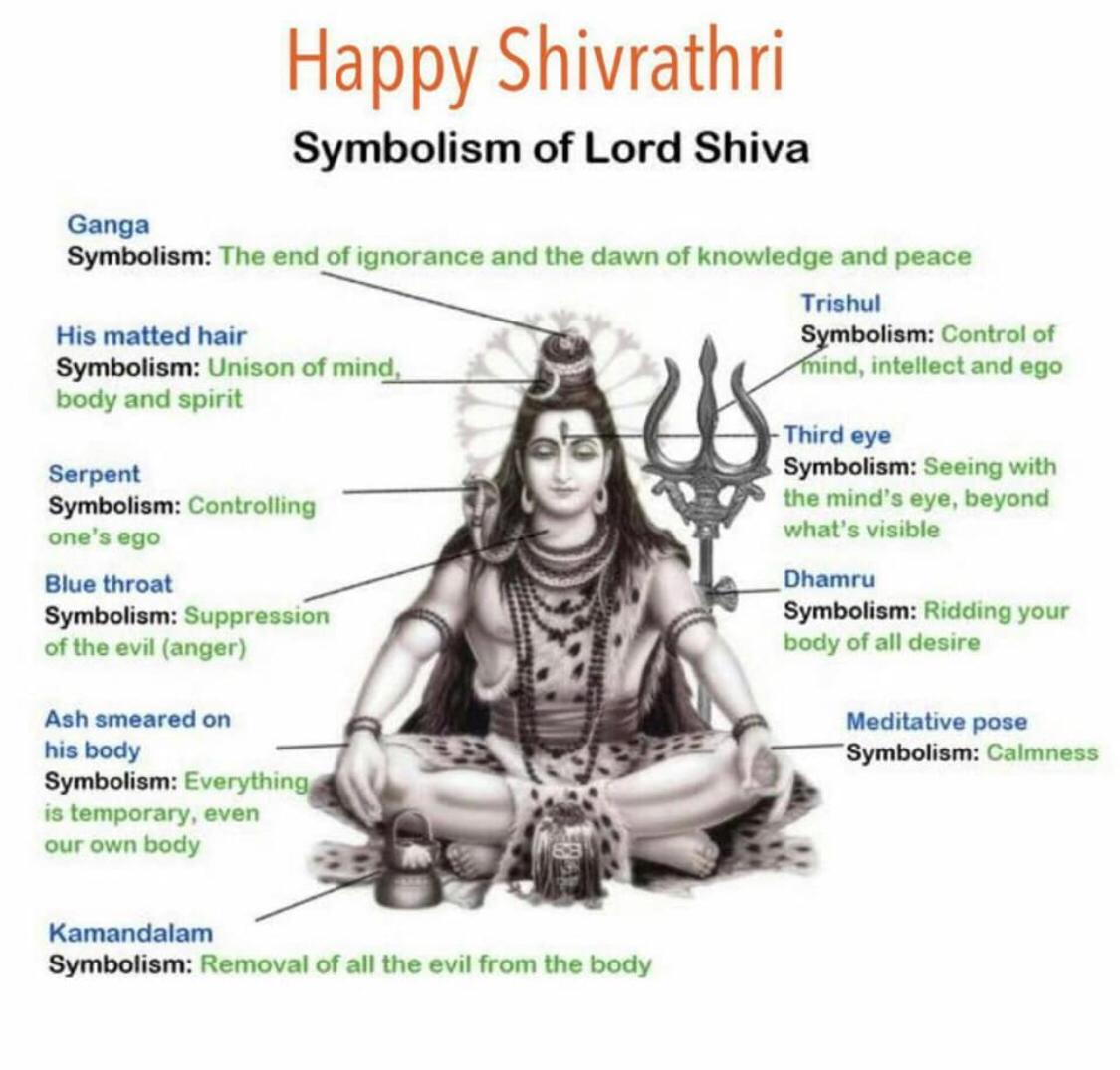
शिवरात्रीके पर्वपर शिवमहिमा --
निम्न श्लोकमें वर्णित जो अग्निस्तंभ है, वह शिवपुराणके वर्णनसे लिया गया है और वही शिवका लिंग (पहचानकी वस्तू) है। उसी बिना ओरछोरवाले अग्निस्तंभके आकारसदृश लिंग शिवके रूपमें प्रतिष्ठित है।
तवैश्वर्यं यत्नाद् यदुपरि विरिंचिर्हरिरधः।
परिच्छेतुं यातावनिलमनलस्कन्धवपुषः।।
ततो भक्तिश्रद्धाभरगुरुगृणद्भ्यां गिरिश यत्।
स्वयं तस्थे ताभ्यां तव किमनुवृत्तिर्न फलति।। १०।।
भावार्थ: जब ब्रह्मा और विष्णु के बीच विवाद हुआ की दोनों में से कौन महान है, तब आपने उनकी परीक्षा करने के लिए अग्निस्तंभ का रूप लिया। ब्रह्मा और विष्णु – दोनों नें स्तंभ को अलग अलग छोर से नापने की कोशिश की मगर वो सफल न हो सके। आखिरकार अपनी हार मानकर उन्होंने आपकी स्तुति की, जिससे प्रसन्न होकर आपने अपना मूल रूप प्रकट किया। सचमुच, अगर कोई सच्चे दिल से आपकी स्तुति करे और आप प्रकट न हों एसा कभी हो सकता है भला?
-- महिम्नस्तोत्र
त्रयोदशी, कृष्ण पक्ष, फाल्गुन, विक्रम संवत २०७७
https://www.dharmadispatch.in/culture/three-stories-for-mahashivaratri-2021
Bharti Raizada

*#भगवान_शिव के "35" रहस्य!!!!!!!!
भगवान शिव अर्थात पार्वती के पति शंकर जिन्हें महादेव, भोलेनाथ, आदिनाथ आदि कहा जाता है।
🔱1. आदिनाथ शिव : - सर्वप्रथम शिव ने ही धरती पर जीवन के प्रचार-प्रसार का प्रयास किया इसलिए उन्हें 'आदिदेव' भी कहा जाता है। 'आदि' का अर्थ प्रारंभ। आदिनाथ होने के कारण उनका एक नाम 'आदिश' भी है।
🔱2. शिव के अस्त्र-शस्त्र : - शिव का धनुष पिनाक, चक्र भवरेंदु और सुदर्शन, अस्त्र पाशुपतास्त्र और शस्त्र त्रिशूल है। उक्त सभी का उन्होंने ही निर्माण किया था।
🔱3. भगवान शिव का नाग : - शिव के गले में जो नाग लिपटा रहता है उसका नाम वासुकि है। वासुकि के बड़े भाई का नाम शेषनाग है।
🔱4. शिव की अर्द्धांगिनी : - शिव की पहली पत्नी सती ने ही अगले जन्म में पार्वती के रूप में जन्म लिया और वही उमा, उर्मि, काली कही गई हैं।
🔱5. शिव के पुत्र : - शिव के प्रमुख 6 पुत्र हैं- गणेश, कार्तिकेय, सुकेश, जलंधर, अयप्पा और भूमा। सभी के जन्म की कथा रोचक है।
🔱6. शिव के शिष्य : - शिव के 7 शिष्य हैं जिन्हें प्रारंभिक सप्तऋषि माना गया है। इन ऋषियों ने ही शिव के ज्ञान को संपूर्ण धरती पर प्रचारित किया जिसके चलते भिन्न-भिन्न धर्म और संस्कृतियों की उत्पत्ति हुई। शिव ने ही गुरु और शिष्य परंपरा की शुरुआत की थी। शिव के शिष्य हैं- बृहस्पति, विशालाक्ष, शुक्र, सहस्राक्ष, महेन्द्र, प्राचेतस मनु, भरद्वाज इसके अलावा 8वें गौरशिरस मुनि भी थे।
🔱7. शिव के गण : - शिव के गणों में भैरव, वीरभद्र, मणिभद्र, चंदिस, नंदी, श्रृंगी, भृगिरिटी, शैल, गोकर्ण, घंटाकर्ण, जय और विजय प्रमुख हैं। इसके अलावा, पिशाच, दैत्य और नाग-नागिन, पशुओं को भी शिव का गण माना जाता है।
🔱8. शिव पंचायत : - भगवान सूर्य, गणपति, देवी, रुद्र और विष्णु ये शिव पंचायत कहलाते हैं।
🔱9. शिव के द्वारपाल : - नंदी, स्कंद, रिटी, वृषभ, भृंगी, गणेश, उमा-महेश्वर और महाकाल।
🔱10. शिव पार्षद : - जिस तरह जय और विजय विष्णु के पार्षद हैं उसी तरह बाण, रावण, चंड, नंदी, भृंगी आदि शिव के पार्षद हैं।
🔱11. सभी धर्मों का केंद्र शिव : - शिव की वेशभूषा ऐसी है कि प्रत्येक धर्म के लोग उनमें अपने प्रतीक ढूंढ सकते हैं। मुशरिक, यजीदी, साबिईन, सुबी, इब्राहीमी धर्मों में शिव के होने की छाप स्पष्ट रूप से देखी जा सकती है। शिव के शिष्यों से एक ऐसी परंपरा की शुरुआत हुई, जो आगे चलकर शैव, सिद्ध, नाथ, दिगंबर और सूफी संप्रदाय में विभक्त हो गई।
🔱12. बौद्ध साहित्य के मर्मज्ञ अंतरराष्ट्रीय : - ख्यातिप्राप्त विद्वान प्रोफेसर उपासक का मानना है कि शंकर ने ही बुद्ध के रूप में जन्म लिया था। उन्होंने पालि ग्रंथों में वर्णित 27 बुद्धों का उल्लेख करते हुए बताया कि इनमें बुद्ध के 3 नाम अतिप्राचीन हैं- तणंकर, शणंकर और मेघंकर।
🔱13. देवता और असुर दोनों के प्रिय शिव : - भगवान शिव को देवों के साथ असुर, दानव, राक्षस, पिशाच, गंधर्व, यक्ष आदि सभी पूजते हैं। वे रावण को भी वरदान देते हैं और राम को भी। उन्होंने भस्मासुर, शुक्राचार्य आदि कई असुरों को वरदान दिया था। शिव, सभी आदिवासी, वनवासी जाति, वर्ण, धर्म और समाज के सर्वोच्च देवता हैं।
🔱14. शिव चिह्न : - वनवासी से लेकर सभी साधारण व्यक्ति जिस चिह्न की पूजा कर सकें, उस पत्थर के ढेले, बटिया को शिव का चिह्न माना जाता है। इसके अलावा रुद्राक्ष और त्रिशूल को भी शिव का चिह्न माना गया है। कुछ लोग डमरू और अर्द्ध चन्द्र को भी शिव का चिह्न मानते हैं, हालांकि ज्यादातर लोग शिवलिंग अर्थात शिव की ज्योति का पूजन करते हैं।
🔱15. शिव की गुफा : - शिव ने भस्मासुर से बचने के लिए एक पहाड़ी में अपने त्रिशूल से एक गुफा बनाई और वे फिर उसी गुफा में छिप गए। वह गुफा जम्मू से 150 किलोमीटर दूर त्रिकूटा की पहाड़ियों पर है। दूसरी ओर भगवान शिव ने जहां पार्वती को अमृत ज्ञान दिया था वह गुफा 'अमरनाथ गुफा' के नाम से प्रसिद्ध है।
🔱16. शिव के पैरों के निशान : - श्रीपद- श्रीलंका में रतन द्वीप पहाड़ की चोटी पर स्थित श्रीपद नामक मंदिर में शिव के पैरों के निशान हैं। ये पदचिह्न 5 फुट 7 इंच लंबे और 2 फुट 6 इंच चौड़े हैं। इस स्थान को सिवानोलीपदम कहते हैं। कुछ लोग इसे आदम पीक कहते हैं।
रुद्र पद- तमिलनाडु के नागपट्टीनम जिले के थिरुवेंगडू क्षेत्र में श्रीस्वेदारण्येश्वर का मंदिर में शिव के पदचिह्न हैं जिसे 'रुद्र पदम' कहा जाता है। इसके अलावा थिरुवन्नामलाई में भी एक स्थान पर शिव के पदचिह्न हैं।
तेजपुर- असम के तेजपुर में ब्रह्मपुत्र नदी के पास स्थित रुद्रपद मंदिर में शिव के दाएं पैर का निशान है।
जागेश्वर- उत्तराखंड के अल्मोड़ा से 36 किलोमीटर दूर जागेश्वर मंदिर की पहाड़ी से लगभग साढ़े 4 किलोमीटर दूर जंगल में भीम के पास शिव के पदचिह्न हैं। पांडवों को दर्शन देने से बचने के लिए उन्होंने अपना एक पैर यहां और दूसरा कैलाश में रखा था।
रांची- झारखंड के रांची रेलवे स्टेशन से 7 किलोमीटर की दूरी पर 'रांची हिल' पर शिवजी के पैरों के निशान हैं। इस स्थान को 'पहाड़ी बाबा मंदिर' कहा जाता है।
🔱17. शिव के अवतार : - वीरभद्र, पिप्पलाद, नंदी, भैरव, महेश, अश्वत्थामा, शरभावतार, गृहपति, दुर्वासा, हनुमान, वृषभ, यतिनाथ, कृष्णदर्शन, अवधूत, भिक्षुवर्य, सुरेश्वर, किरात, सुनटनर्तक, ब्रह्मचारी, यक्ष, वैश्यानाथ, द्विजेश्वर, हंसरूप, द्विज, नतेश्वर आदि हुए हैं। वेदों में रुद्रों का जिक्र है। रुद्र 11 बताए जाते हैं- कपाली, पिंगल, भीम, विरुपाक्ष, विलोहित, शास्ता, अजपाद, आपिर्बुध्य, शंभू, चण्ड तथा भव।
🔱18. शिव का विरोधाभासिक परिवार : - शिवपुत्र कार्तिकेय का वाहन मयूर है, जबकि शिव के गले में वासुकि नाग है। स्वभाव से मयूर और नाग आपस में दुश्मन हैं। इधर गणपति का वाहन चूहा है, जबकि सांप मूषकभक्षी जीव है। पार्वती का वाहन शेर है, लेकिन शिवजी का वाहन तो नंदी बैल है। इस विरोधाभास या वैचारिक भिन्नता के बावजूद परिवार में एकता है।
🔱19. तिब्बत स्थित कैलाश पर्वत पर उनका निवास है। जहां पर शिव विराजमान हैं उस पर्वत के ठीक नीचे पाताल लोक है जो भगवान विष्णु का स्थान है। शिव के आसन के ऊपर वायुमंडल के पार क्रमश: स्वर्ग लोक और फिर ब्रह्माजी का स्थान है।
🔱20.शिव भक्त : - ब्रह्मा, विष्णु और सभी देवी-देवताओं सहित भगवान राम और कृष्ण भी शिव भक्त है। हरिवंश पुराण के अनुसार, कैलास पर्वत पर कृष्ण ने शिव को प्रसन्न करने के लिए तपस्या की थी। भगवान राम ने रामेश्वरम में शिवलिंग स्थापित कर उनकी पूजा-अर्चना की थी।
🔱21.शिव ध्यान : - शिव की भक्ति हेतु शिव का ध्यान-पूजन किया जाता है। शिवलिंग को बिल्वपत्र चढ़ाकर शिवलिंग के समीप मंत्र जाप या ध्यान करने से मोक्ष का मार्ग पुष्ट होता है।
🔱22.शिव मंत्र : - दो ही शिव के मंत्र हैं पहला- ॐ नम: शिवाय। दूसरा महामृत्युंजय मंत्र- ॐ ह्रौं जू सः। ॐ भूः भुवः स्वः। ॐ त्र्यम्बकं यजामहे सुगन्धिं पुष्टिवर्धनम्। उर्वारुकमिव बन्धनान्मृत्योर्मुक्षीय माऽमृतात्। स्वः भुवः भूः ॐ। सः जू ह्रौं ॐ ॥ है।
🔱23.शिव व्रत और त्योहार : - सोमवार, प्रदोष और श्रावण मास में शिव व्रत रखे जाते हैं। शिवरात्रि और महाशिवरात्रि शिव का प्रमुख पर्व त्योहार है।
🔱24.शिव प्रचारक : - भगवान शंकर की परंपरा को उनके शिष्यों बृहस्पति, विशालाक्ष (शिव), शुक्र, सहस्राक्ष, महेन्द्र, प्राचेतस मनु, भरद्वाज, अगस्त्य मुनि, गौरशिरस मुनि, नंदी, कार्तिकेय, भैरवनाथ आदि ने आगे बढ़ाया। इसके अलावा वीरभद्र, मणिभद्र, चंदिस, नंदी, श्रृंगी, भृगिरिटी, शैल, गोकर्ण, घंटाकर्ण, बाण, रावण, जय और विजय ने भी शैवपंथ का प्रचार किया। इस परंपरा में सबसे बड़ा नाम आदिगुरु भगवान दत्तात्रेय का आता है। दत्तात्रेय के बाद आदि शंकराचार्य, मत्स्येन्द्रनाथ और गुरु गुरुगोरखनाथ का नाम प्रमुखता से लिया जाता है।
🔱25.शिव महिमा : - शिव ने कालकूट नामक विष पिया था जो अमृत मंथन के दौरान निकला था। शिव ने भस्मासुर जैसे कई असुरों को वरदान दिया था। शिव ने कामदेव को भस्म कर दिया था। शिव ने गणेश और राजा दक्ष के सिर को जोड़ दिया था। ब्रह्मा द्वारा छल किए जाने पर शिव ने ब्रह्मा का पांचवां सिर काट दिया था।
🔱26.शैव परम्परा : - दसनामी, शाक्त, सिद्ध, दिगंबर, नाथ, लिंगायत, तमिल शैव, कालमुख शैव, कश्मीरी शैव, वीरशैव, नाग, लकुलीश, पाशुपत, कापालिक, कालदमन और महेश्वर सभी शैव परंपरा से हैं। चंद्रवंशी, सूर्यवंशी, अग्निवंशी और नागवंशी भी शिव की परंपरा से ही माने जाते हैं। भारत की असुर, रक्ष और आदिवासी जाति के आराध्य देव शिव ही हैं। शैव धर्म भारत के आदिवासियों का धर्म है।
🔱27.शिव के प्रमुख नाम : - शिव के वैसे तो अनेक नाम हैं जिनमें 108 नामों का उल्लेख पुराणों में मिलता है लेकिन यहां प्रचलित नाम जानें- महेश, नीलकंठ, महादेव, महाकाल, शंकर, पशुपतिनाथ, गंगाधर, नटराज, त्रिनेत्र, भोलेनाथ, आदिदेव, आदिनाथ, त्रियंबक, त्रिलोकेश, जटाशंकर, जगदीश, प्रलयंकर, विश्वनाथ, विश्वेश्वर, हर, शिवशंभु, भूतनाथ और रुद्र।
🔱28.अमरनाथ के अमृत वचन : - शिव ने अपनी अर्धांगिनी पार्वती को मोक्ष हेतु अमरनाथ की गुफा में जो ज्ञान दिया उस ज्ञान की आज अनेकानेक शाखाएं हो चली हैं। वह ज्ञानयोग और तंत्र के मूल सूत्रों में शामिल है। 'विज्ञान भैरव तंत्र' एक ऐसा ग्रंथ है, जिसमें भगवान शिव द्वारा पार्वती को बताए गए 112 ध्यान सूत्रों का संकलन है।
🔱29.शिव ग्रंथ : - वेद और उपनिषद सहित विज्ञान भैरव तंत्र, शिव पुराण और शिव संहिता में शिव की संपूर्ण शिक्षा और दीक्षा समाई हुई है। तंत्र के अनेक ग्रंथों में उनकी शिक्षा का विस्तार हुआ है।
🔱30.शिवलिंग : - वायु पुराण के अनुसार प्रलयकाल में समस्त सृष्टि जिसमें लीन हो जाती है और पुन: सृष्टिकाल में जिससे प्रकट होती है, उसे लिंग कहते हैं। इस प्रकार विश्व की संपूर्ण ऊर्जा ही लिंग की प्रतीक है। वस्तुत: यह संपूर्ण सृष्टि बिंदु-नाद स्वरूप है। बिंदु शक्ति है और नाद शिव। बिंदु अर्थात ऊर्जा और नाद अर्थात ध्वनि। यही दो संपूर्ण ब्रह्मांड का आधार है। इसी कारण प्रतीक स्वरूप शिवलिंग की पूजा-अर्चना है।
🔱31.बारह ज्योतिर्लिंग : - सोमनाथ, मल्लिकार्जुन, महाकालेश्वर, ॐकारेश्वर, वैद्यनाथ, भीमशंकर, रामेश्वर, नागेश्वर, विश्वनाथजी, त्र्यम्बकेश्वर, केदारनाथ, घृष्णेश्वर। ज्योतिर्लिंग उत्पत्ति के संबंध में अनेकों मान्यताएं प्रचलित है। ज्योतिर्लिंग यानी 'व्यापक ब्रह्मात्मलिंग' जिसका अर्थ है 'व्यापक प्रकाश'। जो शिवलिंग के बारह खंड हैं। शिवपुराण के अनुसार ब्रह्म, माया, जीव, मन, बुद्धि, चित्त, अहंकार, आकाश, वायु, अग्नि, जल और पृथ्वी को ज्योतिर्लिंग या ज्योति पिंड कहा गया है।
दूसरी मान्यता अनुसार शिव पुराण के अनुसार प्राचीनकाल में आकाश से ज्योति पिंड पृथ्वी पर गिरे और उनसे थोड़ी देर के लिए प्रकाश फैल गया। इस तरह के अनेकों उल्का पिंड आकाश से धरती पर गिरे थे। भारत में गिरे अनेकों पिंडों में से प्रमुख बारह पिंड को ही ज्योतिर्लिंग में शामिल किया गया।
🔱32.शिव का दर्शन : - शिव के जीवन और दर्शन को जो लोग यथार्थ दृष्टि से देखते हैं वे सही बुद्धि वाले और यथार्थ को पकड़ने वाले शिवभक्त हैं, क्योंकि शिव का दर्शन कहता है कि यथार्थ में जियो, वर्तमान में जियो, अपनी चित्तवृत्तियों से लड़ो मत, उन्हें अजनबी बनकर देखो और कल्पना का भी यथार्थ के लिए उपयोग करो। आइंस्टीन से पूर्व शिव ने ही कहा था कि कल्पना ज्ञान से ज्यादा महत्वपूर्ण है।
🔱33.शिव और शंकर : - शिव का नाम शंकर के साथ जोड़ा जाता है। लोग कहते हैं- शिव, शंकर, भोलेनाथ। इस तरह अनजाने ही कई लोग शिव और शंकर को एक ही सत्ता के दो नाम बताते हैं। असल में, दोनों की प्रतिमाएं अलग-अलग आकृति की हैं। शंकर को हमेशा तपस्वी रूप में दिखाया जाता है। कई जगह तो शंकर को शिवलिंग का ध्यान करते हुए दिखाया गया है। अत: शिव और शंकर दो अलग अलग सत्ताएं है। हालांकि शंकर को भी शिवरूप माना गया है। माना जाता है कि महेष (नंदी) और महाकाल भगवान शंकर के द्वारपाल हैं। रुद्र देवता शंकर की पंचायत के सदस्य हैं।
🔱34. देवों के देव महादेव : देवताओं की दैत्यों से प्रतिस्पर्धा चलती रहती थी। ऐसे में जब भी देवताओं पर घोर संकट आता था तो वे सभी देवाधिदेव महादेव के पास जाते थे। दैत्यों, राक्षसों सहित देवताओं ने भी शिव को कई बार चुनौती दी, लेकिन वे सभी परास्त होकर शिव के समक्ष झुक गए इसीलिए शिव हैं देवों के देव महादेव। वे दैत्यों, दानवों और भूतों के भी प्रिय भगवान हैं। वे राम को भी वरदान देते हैं और रावण को भी।
🔱35. शिव हर काल में : - भगवान शिव ने हर काल में लोगों j दिए है

In celebration of Shivaratri...a story POEM.
Rudra-Shambhu-Shiva-Shakti Ma
Like a searchlight Shambhu swept
Into the dark where all had slept.
Luminous pillar, blazing bright,
Flashing across the endless night.
Durga dreaming of Her love,
Shiva descending from above,
That lucent shaft of hot desire,
Entered Her and lit Her fire,
Tossing sparks as galaxies,
Spiraling eddies from eternity,
Teasing beams and playful motes,
Began the chorus, singing notes.
Up the mad harmonic scale,
Like a comet’s trailing tail,
A golden Lingam split the sky,
Penetrating the veils on high,
Standing alone without support,
That Shiva began to move and sport.
A flaming figure came into view,
Emerging from the flame, Shambhu
Began to move with elegance,
The complex steps of a cosmic dance.
Spewing planets of molten lava,
The din-din drum of Nataraja,
Metronome of heartbeat rhythm,
Beat out measures into Heavens.
Then naked from Her endless sleep,
Shakti leapt from within the deep,
Her beautiful hair in disarray,
She moved Her body in every way,
Matching His, in spinning motion,
He the shore and She the ocean.
A roar of consonants arose,
Chattering from their ecstatic throes,
They spoke creation into life,
Ivory Shiva and His ebony wife,
He the mountain, She the valley,
Heart to heart and belly to belly.
Reunited, their longing grew,
Blazing Suns in a vault of blue,
While verbs, nouns, and prepositions,
Emerged from each erotic position.
Sung awake by Their songs of love,
The myriad creatures below and above,
Awoke at once with a hungry roar,
Incarnate life arose once more,
Taking the elements as their skin,
The wandering souls took birth again,
In teeming swamps of primal ooze,
They lived again and began to choose,
Which started the mighty cosmic wheel,
Elliptical orbits, bent to feel,
The beams of passion strike their face,
The tick of time and curve of space,
Like pollen tossed upon the wind,
Trillions of seeds were cast again.
Ovum, sperm, and countless spores,
In endless shapes and rainbow colors,
Libraries of DNA,
With volumes stacked in precise array,
Protozoic laboratories,
Recombined the ancient stories,
Cut and pasted every file,
Recombinant strands, mile after mile,
The neural pathways wild design
Completed, the mainframe went online.
Shiva Shambhu seated in endless bliss,
Was undisturbed by all of this.
While Sati-Shakti by His side,
Smiled at life with a mother’s pride,
And as they kissed each other’s lips,
For a moment, the Sun and Moon eclipsed.
Copyright 2022 Jeffrey Armstrong All Rights Reserved

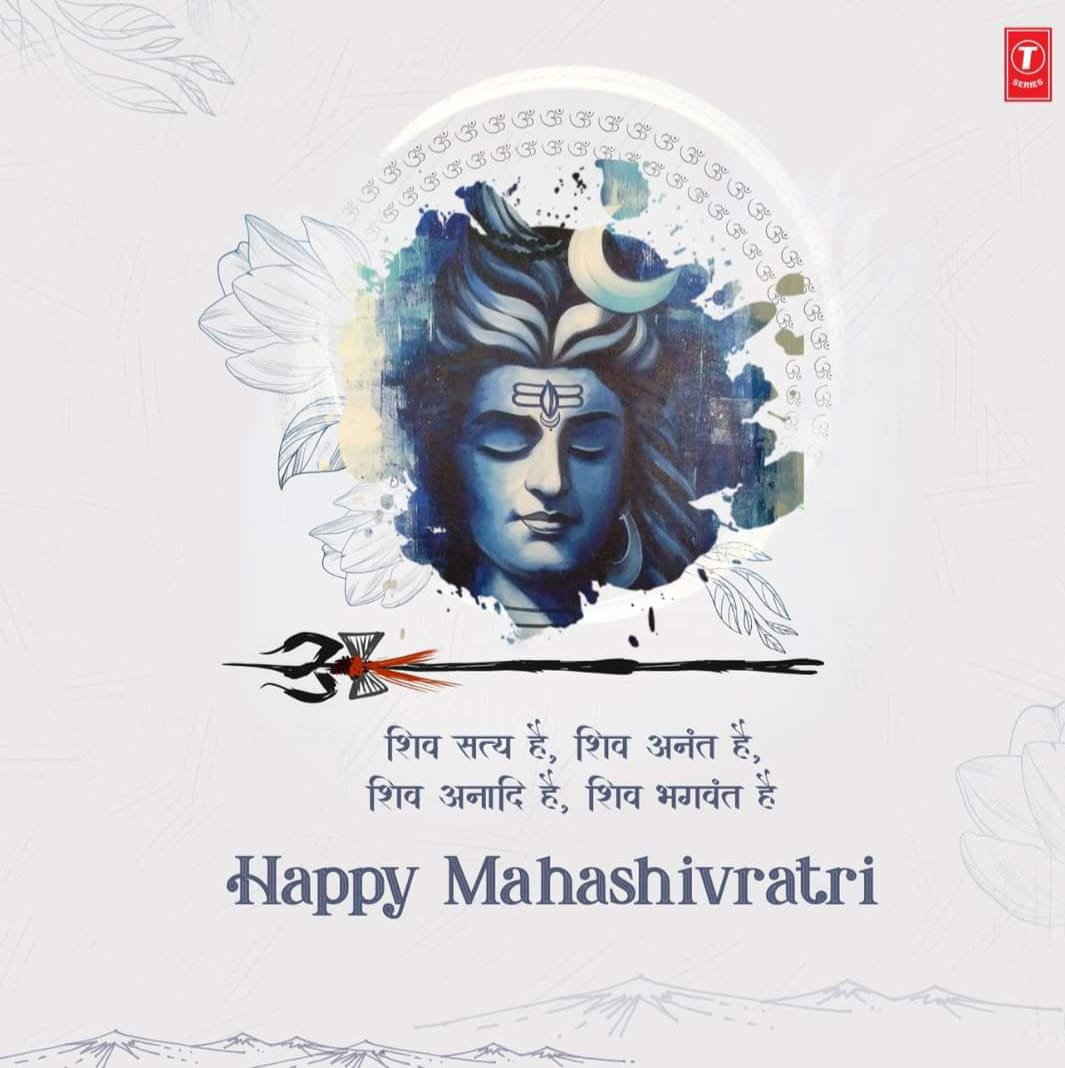
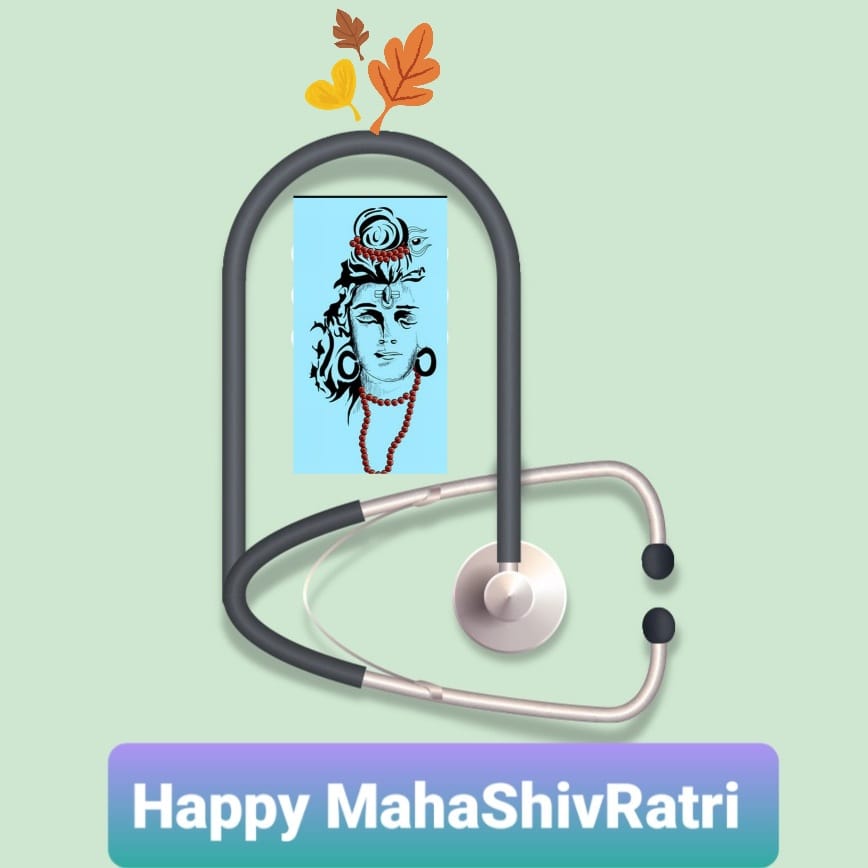
The_Vedic_Tradition_Cosmos_Connections_a.pdf
Śiva represents both the axis of the universe as well as that of one’s inner being.
One of the great festivals celebrated in Varanasi is Śivarātri which is celebrated on the 13th day of the dark fortnight of the Phalguna month (February-March). On that day you can see the sun rise in the east with the new moon just above it, which is represented iconographically by Śiva (as the sun) wearing the moon on his head.